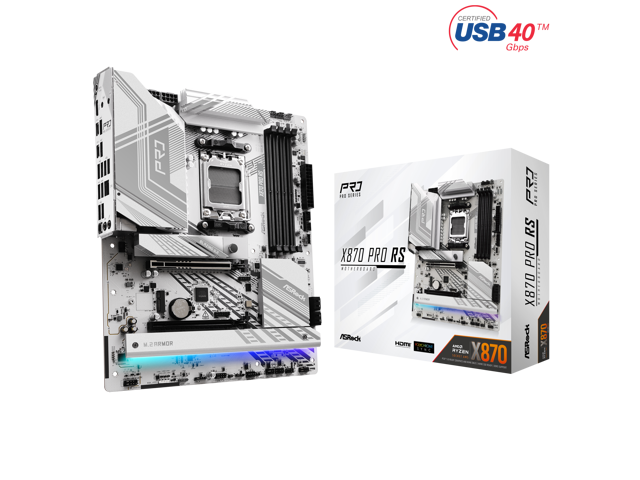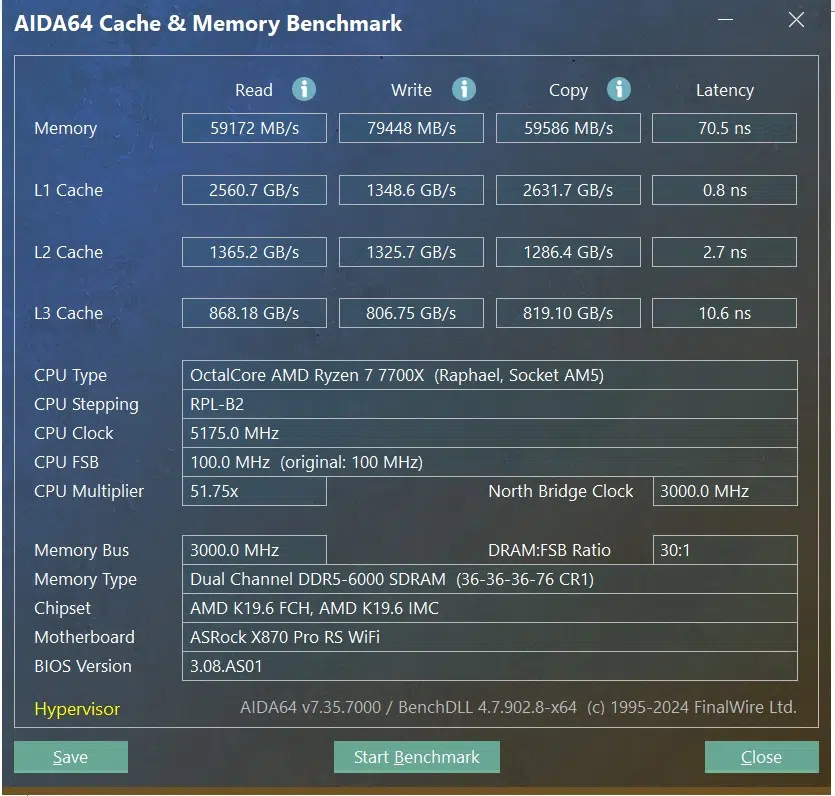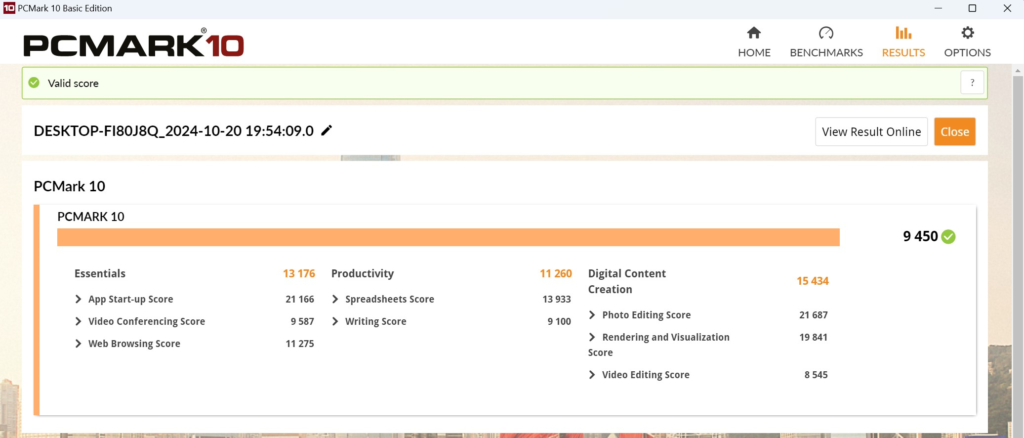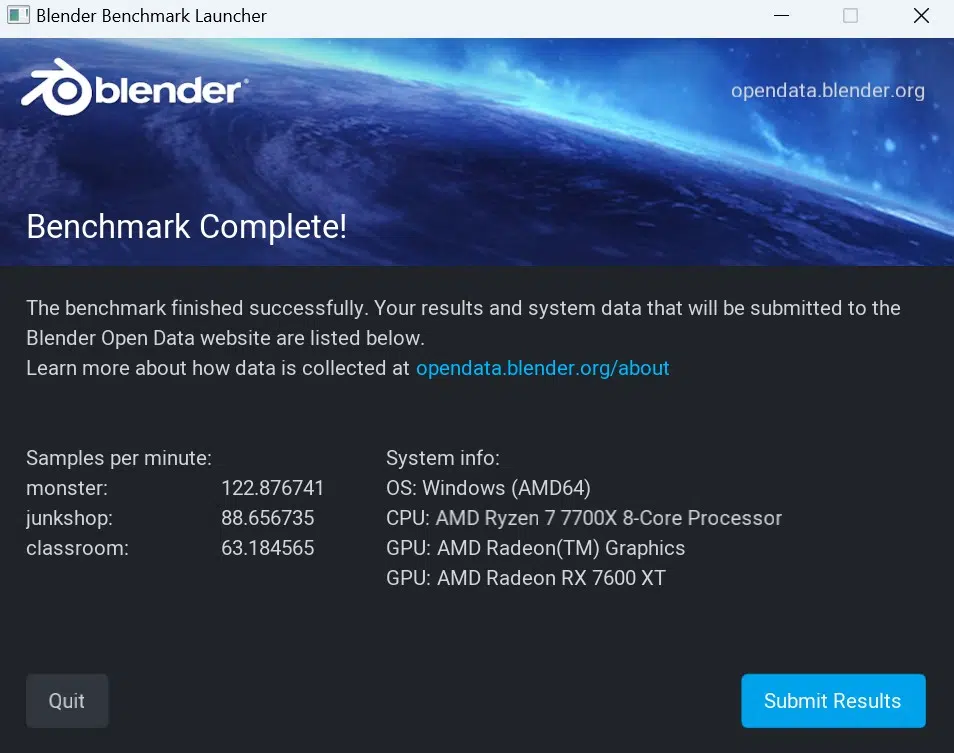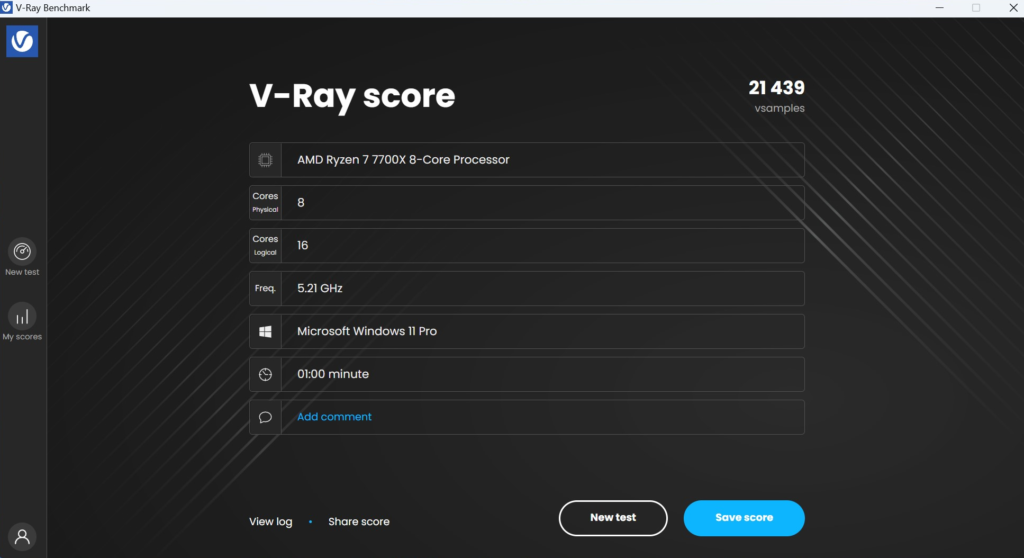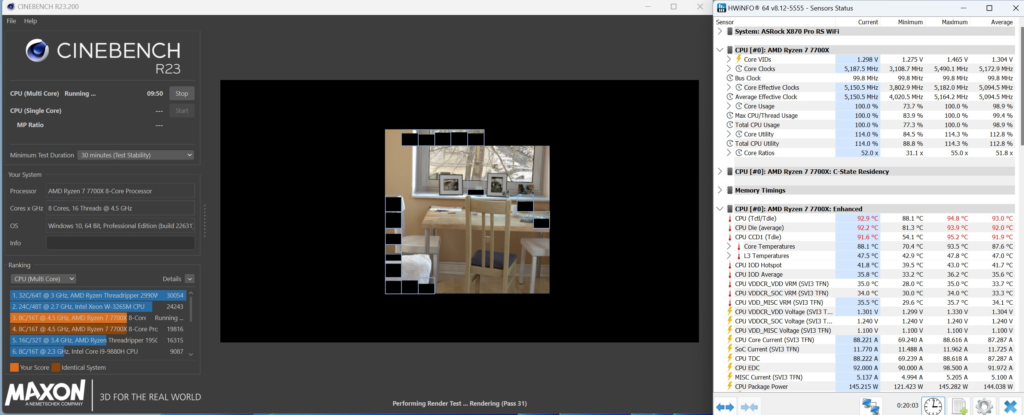
Introduction
On September, 30th, 2024 AMD launched a new chipset refresh series on the AM5 socket and platform. Moving through the entire ASRock lineup, today we will review the ASRock X870 Pro RS WiFi with a retail MSRP $209. ASRock markets this motherboard as being more general purpose, content creation whereas the Steel Legend and RIPTIDE boards are more gaming-centric. However, as you read through, you will be hard-pressed to see anything lacking in the ASRock X870 Pro RS WiFi.
At $209, this is a well-positioned motherboard at a value-oriented price point that still offers all the features and PCIe lanes that the higher-end X870 AMD chipset offers, and this model has integrated WiFi. In fact, ASRock also has an X870 Pro RS model that cuts in right under 200 dollars at $199, if you do not need WiFi, but for just $10 more, this model provides WiFi 7, and you get all the X870 features around 200 dollars, which is a great entry point for moving to the AM5 platform if you are coming from a previous generation.
If you check out ASRock’s lineup of new X870 and X870E motherboards, you’ll find the ASRock X870 Pro RS WiFi is the lowest tier of X870 motherboard ASRock offers. However, just because it is the lowest tier doesn’t mean any corners have been cut. The motherboard still features a VRM configuration of 14+2+1 Power Phase, 80A Dr.MOS for VCore, just like the X870 Riptide WiFi above it.
The X870 and X870E chipsets are refinements of the previous X670 and X670E. In fact, there is no performance gain between the two chipset versions. This chart from AMD is quite helpful if you need a reference. If you aren’t familiar with the AMD X870 and X870E chipsets, these are new chipsets for AM5 motherboards announced back at Computex 2024. Though these new AM5 chipsets were announced alongside AMD Zen 5 CPUs (Ryzen 9000 series), they are not required to run Zen 5 CPUs, and have no performance differences for Zen 5 CPUs, or Zen 4, compared to previous AMD X670 and X670E series chipsets.
Primarily, the addition of USB4 is added as a requirement, and the number of PCIe lanes changes around a bit to allow for features such as Gen5 M.2 connectors, and Gen5 PCIe expansion slots. This does give motherboard manufacturers the chance to feature new designs, updated components, and perhaps even better routing of lanes for higher DDR5 memory frequencies. AMD has a great comparison chart here that shows the differences in PCIe assignments, and requirements.
Overall, the X870 chipset ushers in several new additions to the AM5 socket motherboards; namely a dedicated Gen5 M.2 SSD slot, Gen5 x 16 PCIe slot, and USB4 functionality. Of course, as the box says, we also get WiFi 7. Additionally, the motherboard has an 8-layer high-quality PCB design and features long-life capacitors. The retail price of this motherboard at the time of writing is $209.
Packaging and Contents
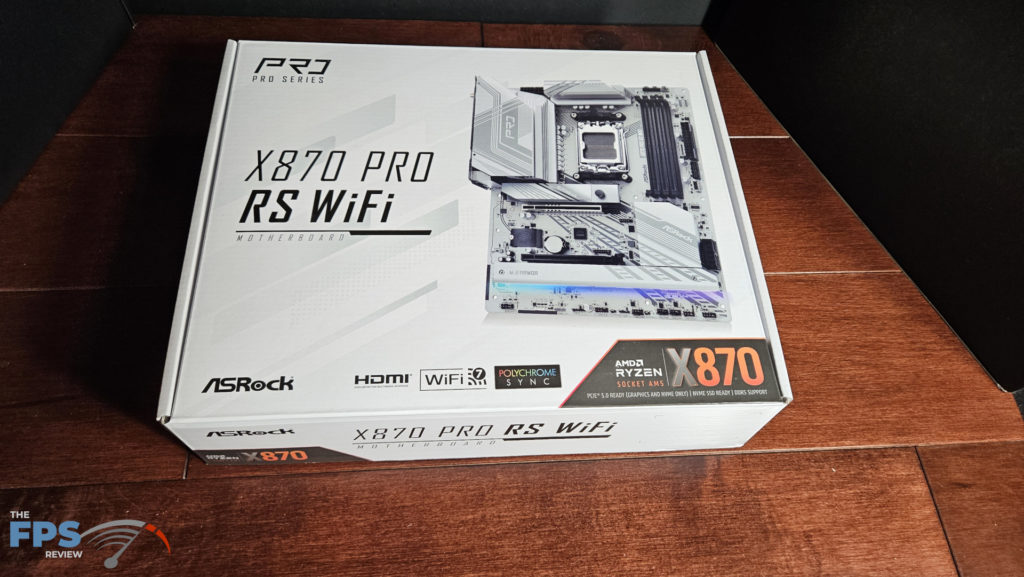
We received a full retail packaged box directly from ASRock. The motherboard was well protected. The board was placed in a thick anti-static bag and surrounded by cardboard. The accessories were sparse. You will find a bag of two SATA cables, a “Quick Start Guide” and two wifi antennas.
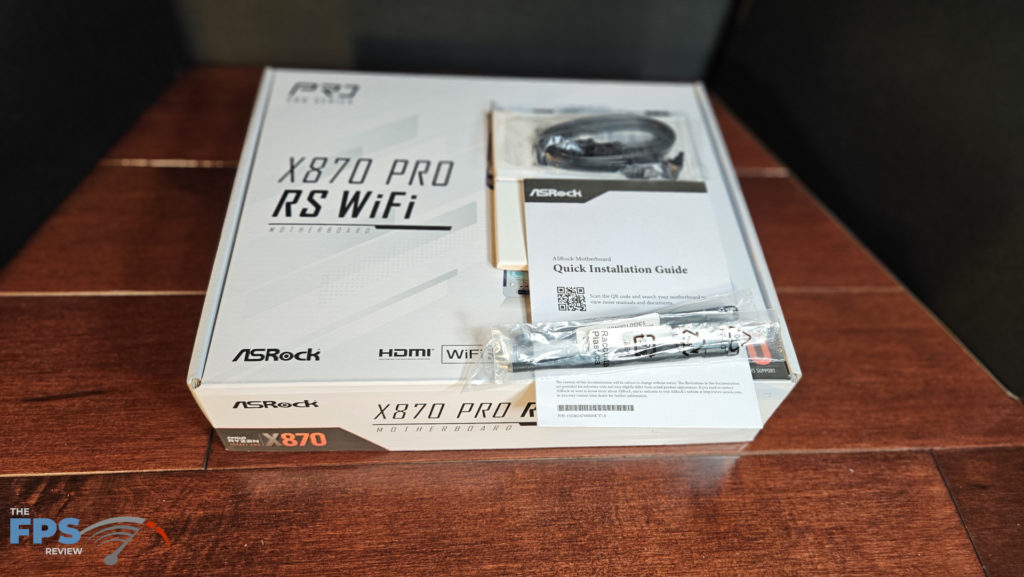
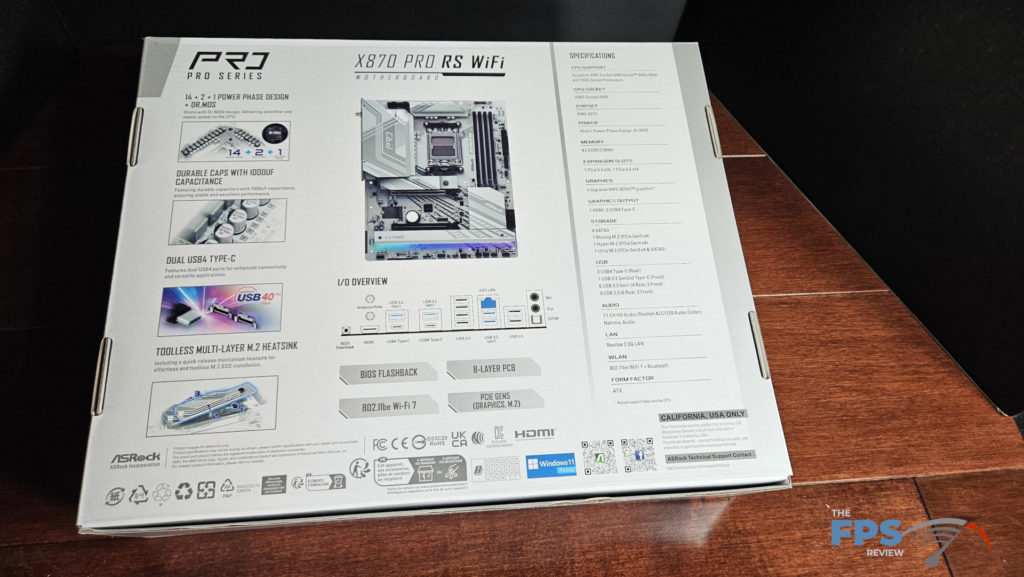
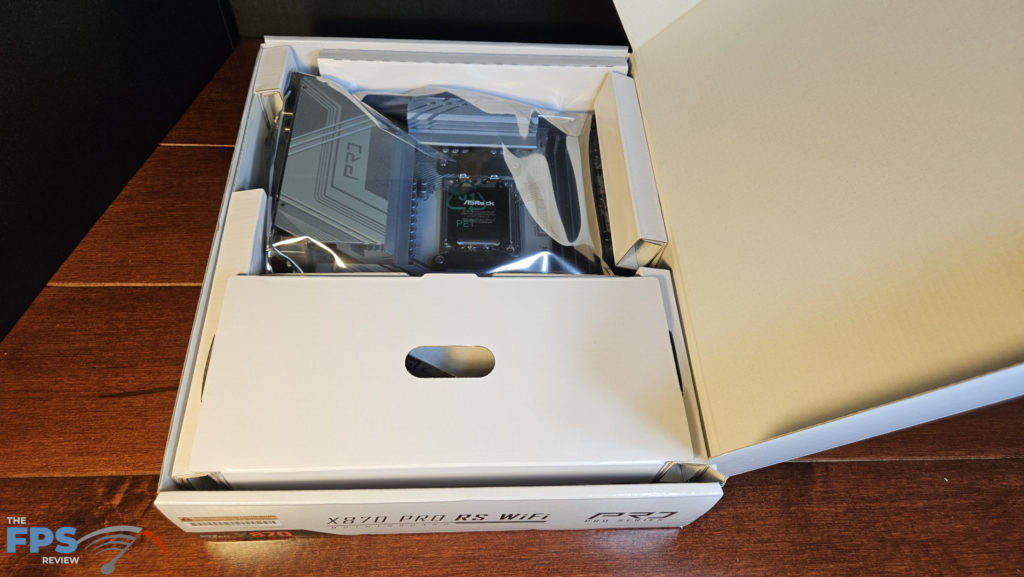
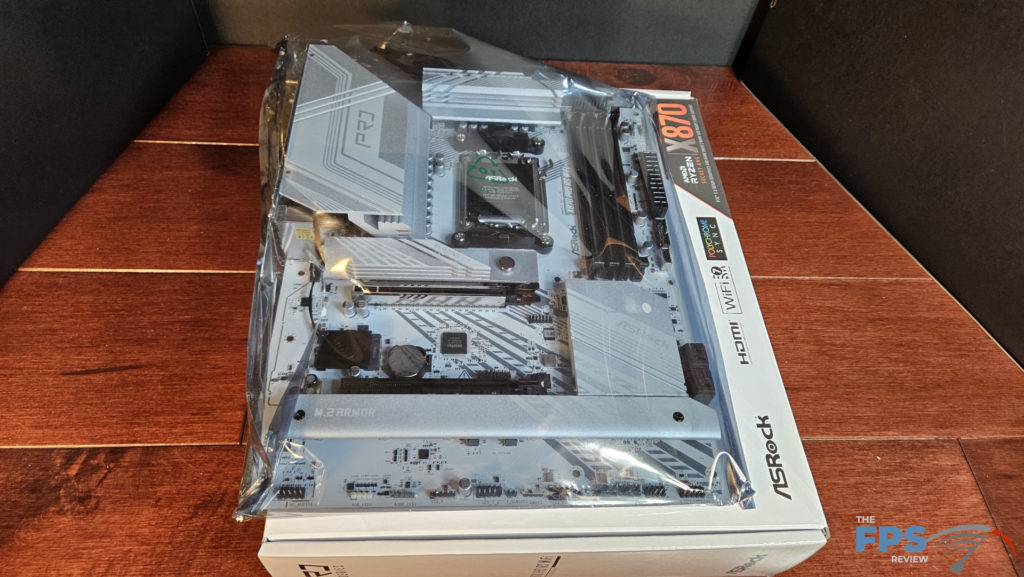
ASRock X870 Pro RS WiFi Features
The ASRock X870 Pro RS WiFi is a white and silver board with black accents. The “RS” stands for Racing Sport, so you will see racing stripes running along the “Blazing” and “Hyper” M.2 heatsink, the chipset heatsink, as well as the body of the board. While it does catch your eye, the stripes are certainly not overdone. Once again, the board is heavy and feels well-built. There is no bend or “give” to the board when handled. The heatsinks are white-silver powder-coated aluminum and are well-mounted. There are no heat pipes.
There are no Debug numerical LEDs or onboard power or reset buttons. There is a set of Debug LEDs in the upper right corner to help identify boot issues. The primary M.2 (Blazing) SSD slot heatsink has a quick-release latch and top and bottom-mounted thermal pads. The primary PCIe slot is metal-reinforced. All M.2 slots have tool-less hold-downs. The bottom M.2 heatsink does require a Phillips screwdriver to access though.
There is a 2.5Gbps wired ethernet here supplied by RealTek Dragon RTL8125BG. WiFi7 is from a MediaTek chip which is mounted below the I/O panel in an M.2E slot. Audio is 7.1 channel capable via a RealTek ALC 1220 chip. This supports Nihimic software for headphones. USB4 is available on the back I/O panel, a new feature of the X870 chipset. There is an RGB LED strip just below the M.2 #2 and #3 heatsink just as with the X870 Steel Legend and RIPTIDE motherboards. This is controlled by ASRock Polychrome RGG Sync software.
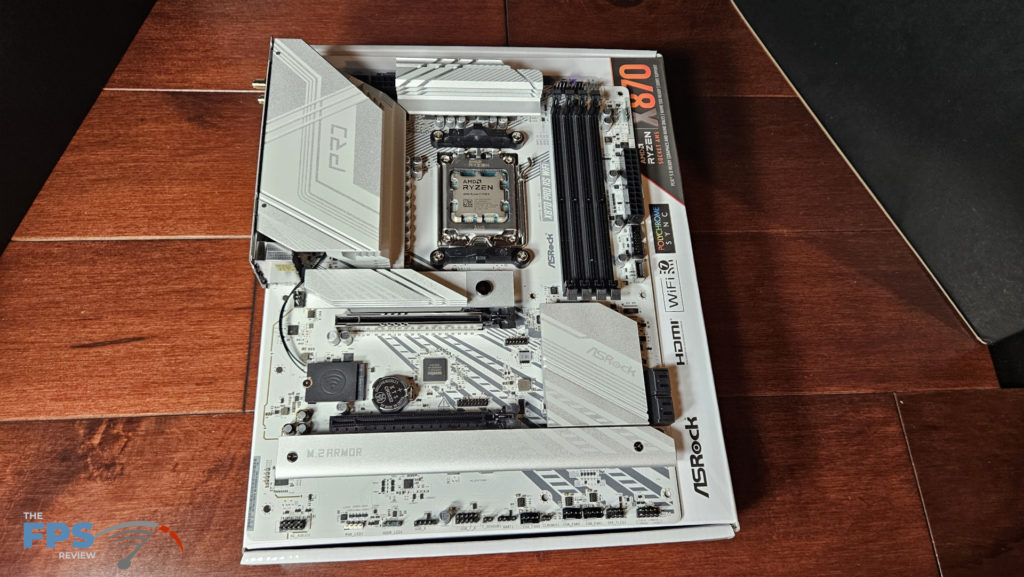
Power Delivery

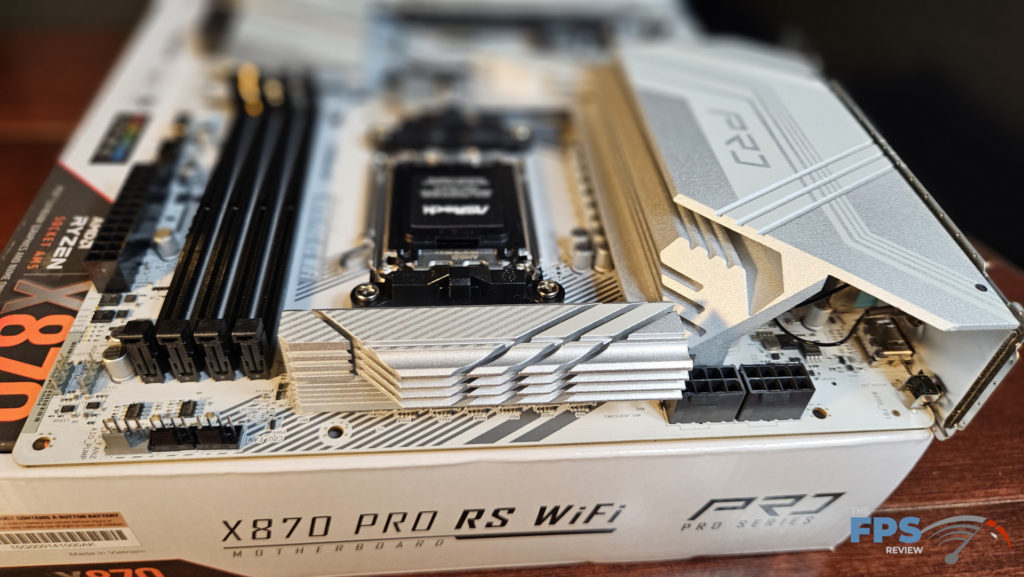
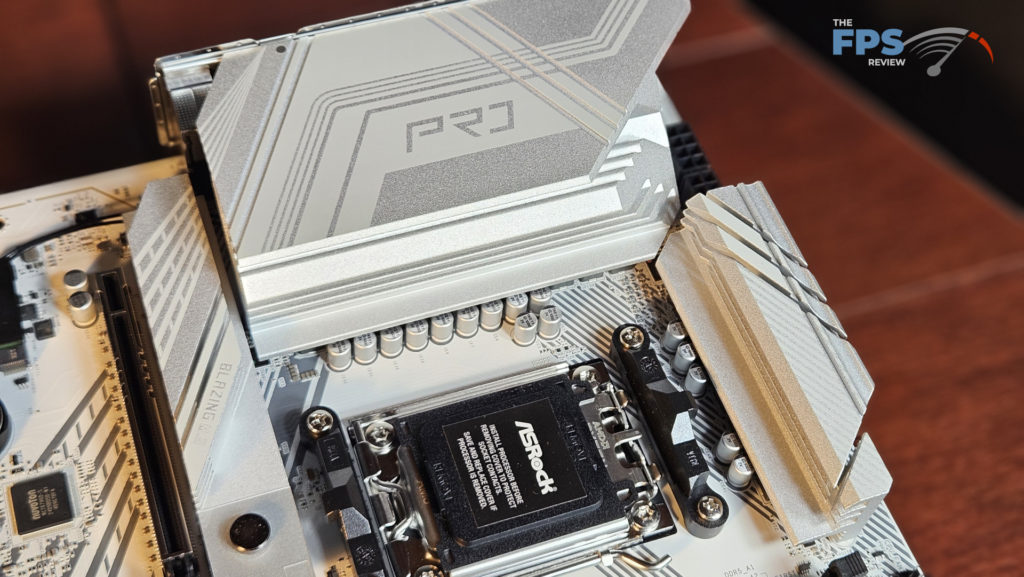
The ASRock X870 Pro RS WiFi features 14+2+1 power phase, 80Amp total VRM, and Dr.MOS SPS protection for VCore+SOC. The obvious item that is different on this motherboard compared to the X870 Steel Legend and X870 Phantom Gaming RIPTIDE are the capacitors. Both the color scheme and top markings are vastly different. ASRock does advertise 1000 microF capacitance, which is identical to their other two X870 boards. As stated the heatsinks are solid and heavy, but not heapiped. Power is supplied by two 8-pin EPS connectors from the PSU. Interestingly, this is the same power outlay as the Steel Legend and the Phantom Gaming RIPTIDE motherboards.
Memory and Storage
The ASRock X870 Pro RS WiFi has 4 DIMM slots and supports DDR5 memory up to 8000MT/s (overclocked). The maximum capacity of the DIMMs is 256GB. Both ExPO and XMP memory profiles are supported. The slots are spaced far enough from the CPU bracket to allow easy placement of our AIO cooler. We can not imagine a problem mounting almost any CPU cooler unless you purchase memory with an extraordinarily tall heat sink enclosure or RGB.
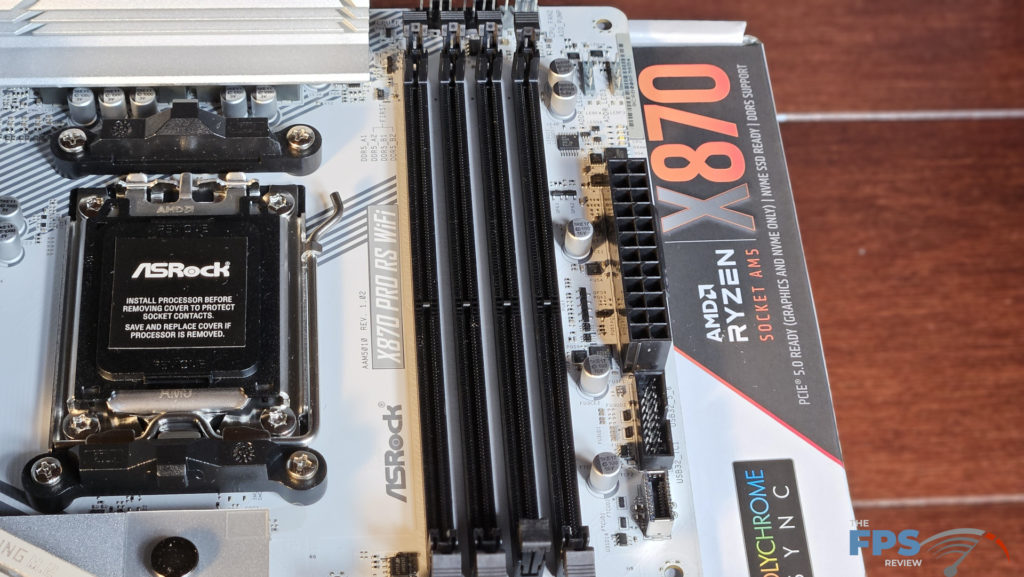
Storage slots for this motherboard include one M.2 Gen5 slot, one M.2 Gen4 slot, and one M.2 Gen3 slot. This is another difference compared to ASRock’s other X870 boards. ASRocks refers to these as Blazing (Gen5) , Hyper (Gen4) and Ultra (Gen3). M.2 speeds are as follows: M.2_1 128Gb/s, M.2_2 64Gb/s and M.2_3 32Gb/s. The primary slot is supplied by the CPU and the other two are by the X870 chipset.
The Gen 5 M.2 is located just above the primary PCIe slot and the other two M.2 slots are below the secondary PCIe slot. The primary M.2 has a generous-sized aluminum heat sink which is removed by a quick-release button. The button is slid towards the heatsink to open it. The second and third M.2 slots are underneath a slimmer aluminum heatsink which is released by standard Phillips head screws. All three slots have easy access, the primary can be accessed even with a GPU in place.
All three slots have thermal pads, primary top, and bottom, the other two only the top. An ASMedia ASM 1061 chip supplies four SATA 6 Gb/s ports which are located aside the chipset heatsink on the edge of the board at 90-degree angles.
Expansion
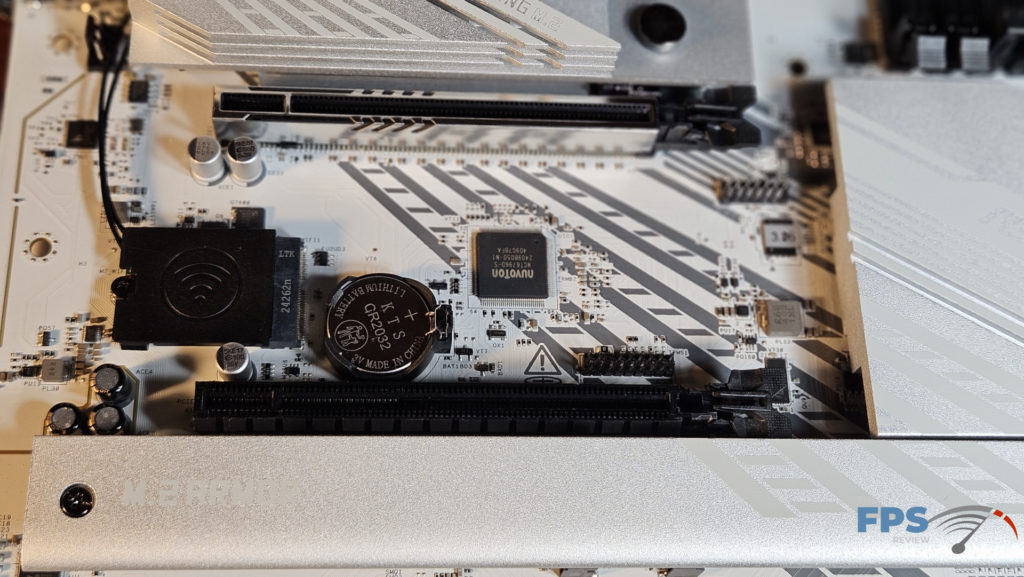
The ASRock X870 Pro RS WiFi has two expansion slots. The primary slot is PCIe 5.0 x 16 and the secondary is PCIe 4.0 at x 4. If the M.2_2 slot is occupied the secondary PCIe will be disabled. You can see that the primary PCIe slot is metal-reinforced. Neither of the PCIe slots has any sort of fancy release mechanism. With the ASRock Steel Legend RX 7600 XT graphics card installed in this motherboard, it was somewhat difficult to reach the latch to remove the graphics card. You can also see the small M.2_E key to the left of the battery. This is the wireless module location on this motherboard, rather than it being covered under the I/O port VRM heatsink.
I/O
The ASRock X870 Pro RS WiFi rear I/O panel is of the style where the rear motherboard plate is preinstalled. The connections on the rear include a BIOS Flashback, WiFi antenna, HDMI port, 4 x USB 3.1 Type-A ports, 2 x USB4 Type C ports, 6 x USB 2.0 Type-A ports, 2.5Gb RJ-45 Ethernet port, SPDIF, Line out and Microphone Input.
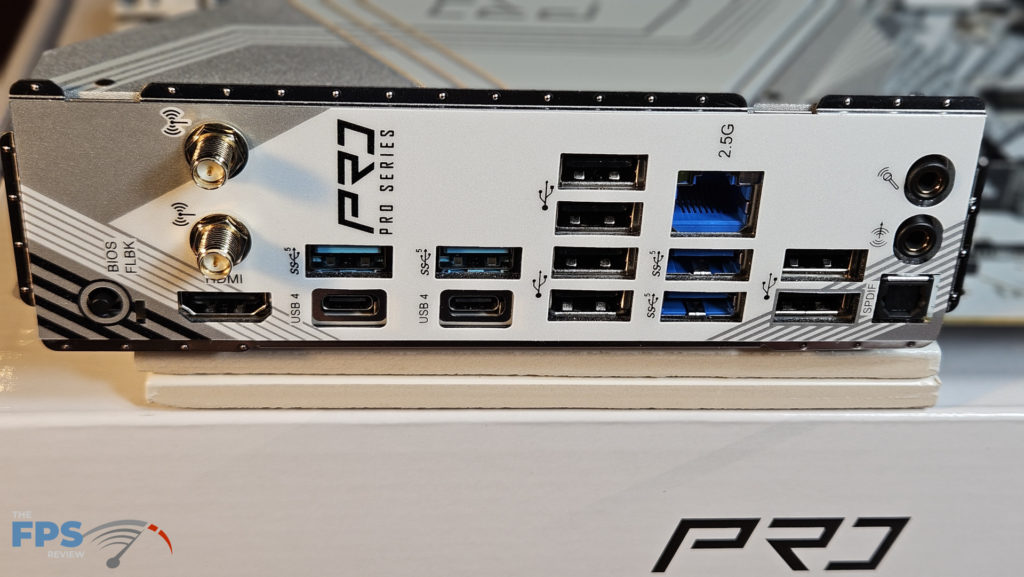
Additionally, there are a total of seven 4-pin fan headers. At the top right, two CPUs and one AIO pump. At the bottom right three chassis fan headers, and a final header behind the I/O panel. Along the right side is one USB 3.2 Gen1 front panel header and a single USB 3.2 Type C header. At the bottom of the motherboard are the front panel power button connector, two USB 2.0 headers, and the front panel audio header.
For the RGB we have one 12V LED (4-pin) header and three Addressable LED (3-pin) headers if the onboard lighting doesn’t do it for you. RGB controls are supplied by ASRock Polychrome SYNC software. As was stated earlier, audio for this board is supplied by RealTek ALC 1220 codec. This can support up to 7.1 channel sound and also Nihimic sound software.
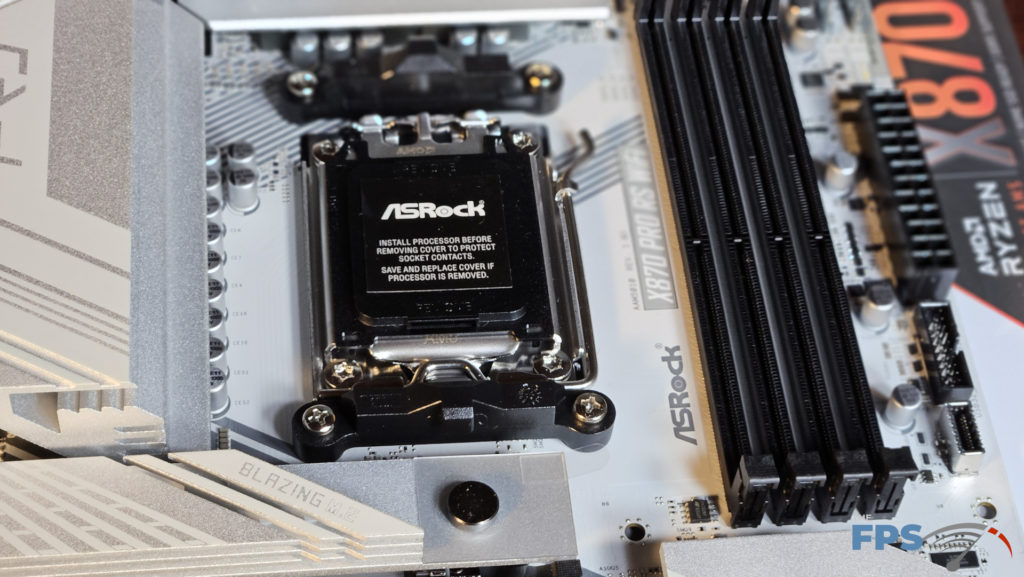
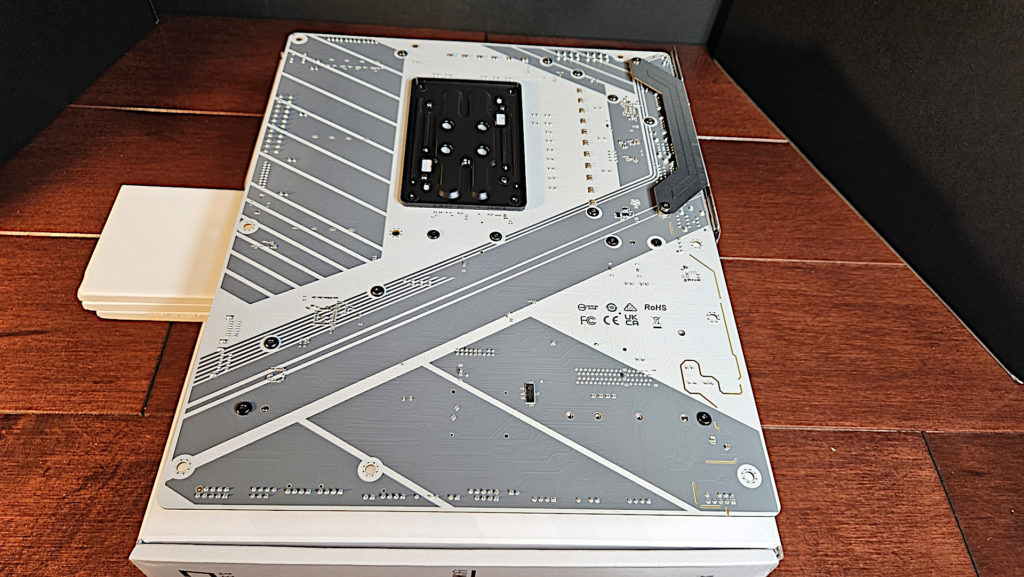
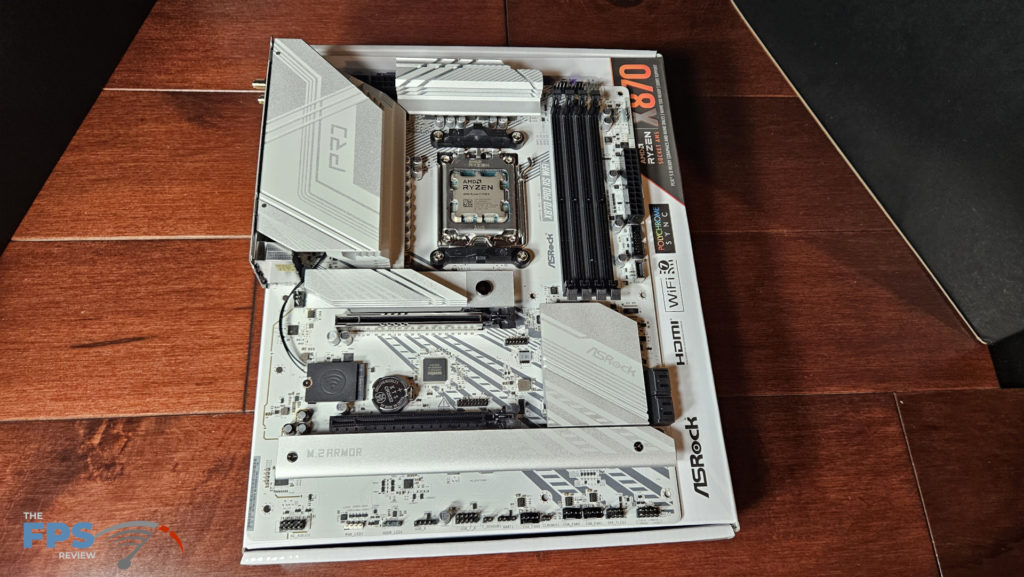

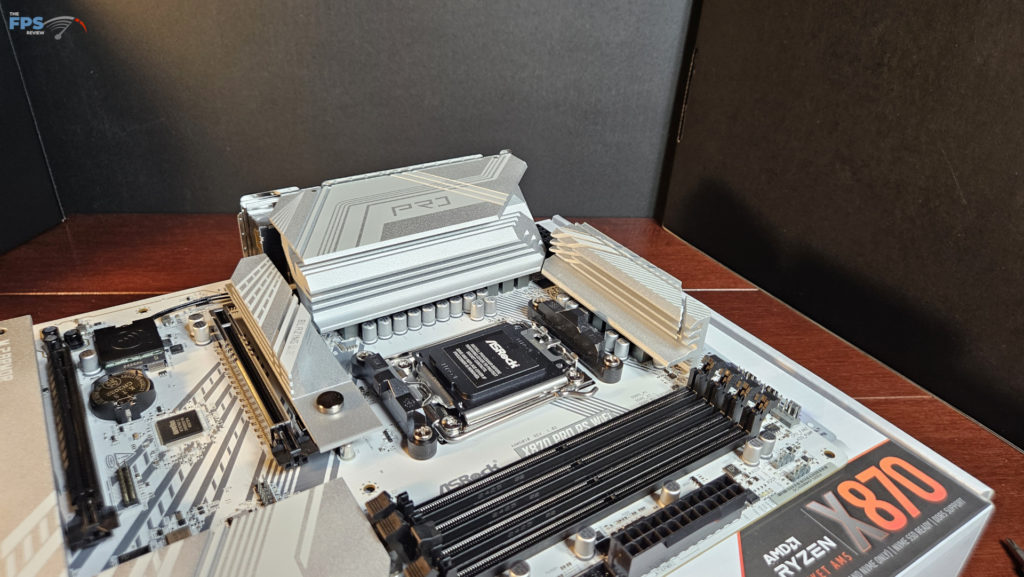
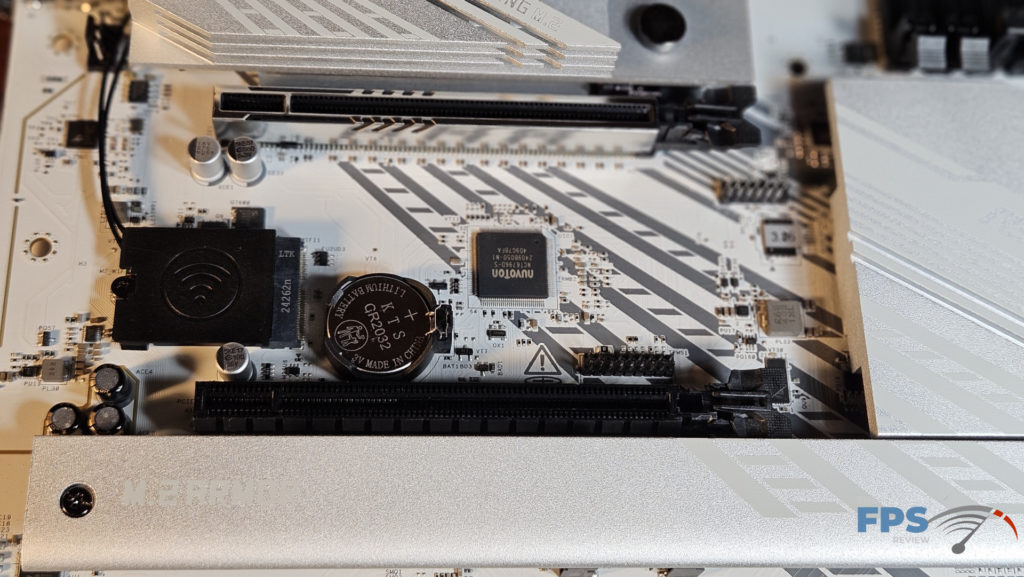
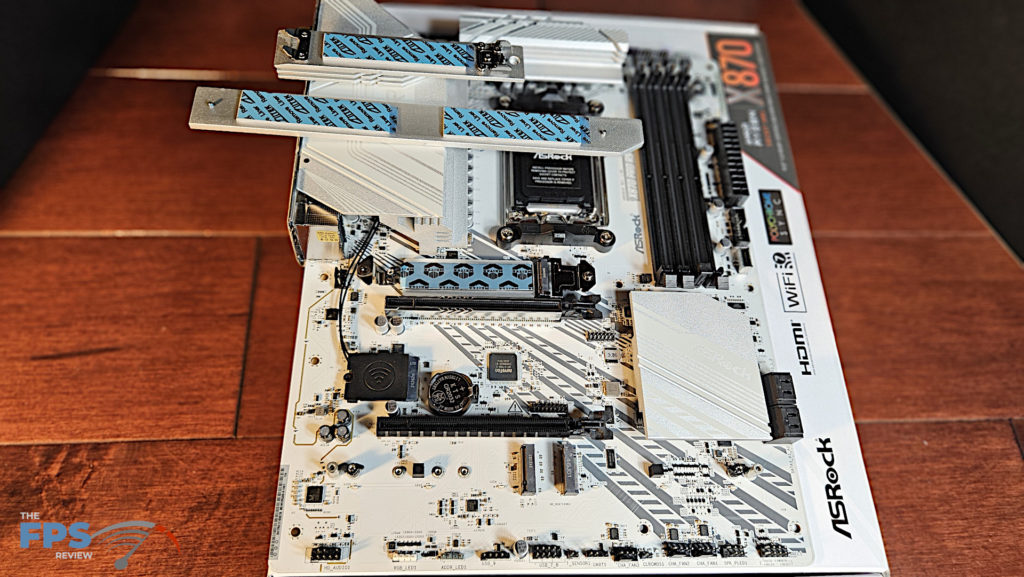
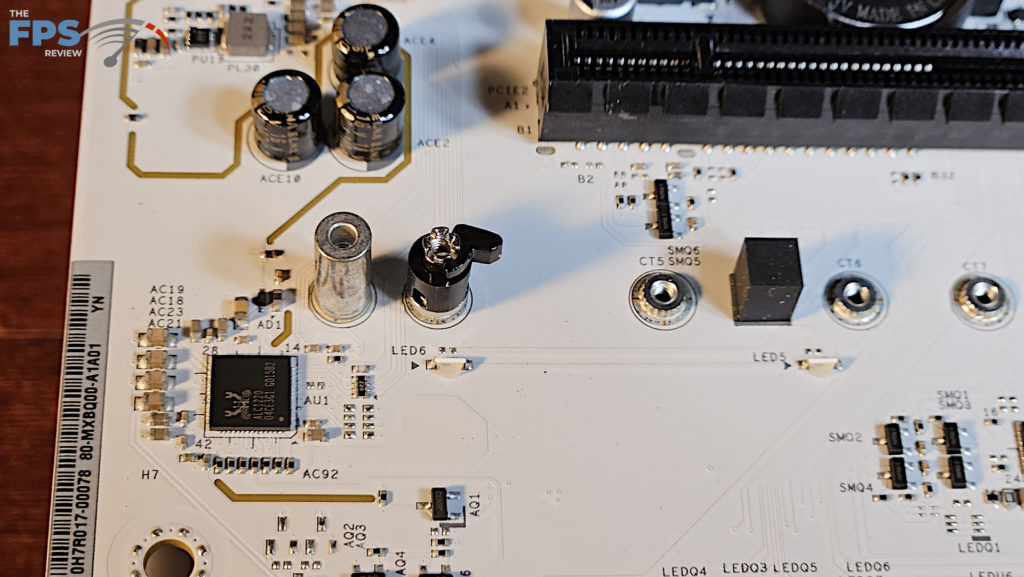
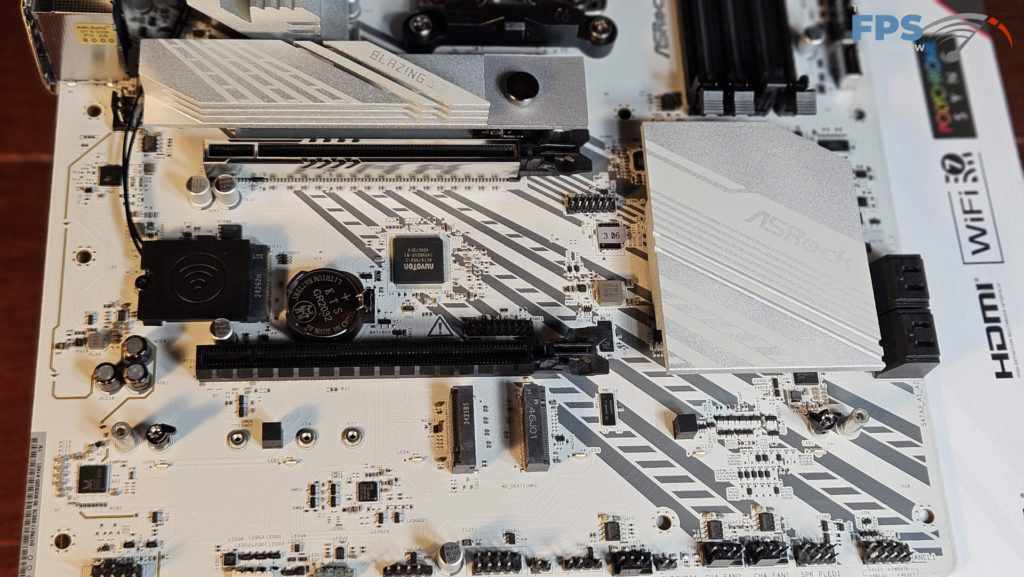
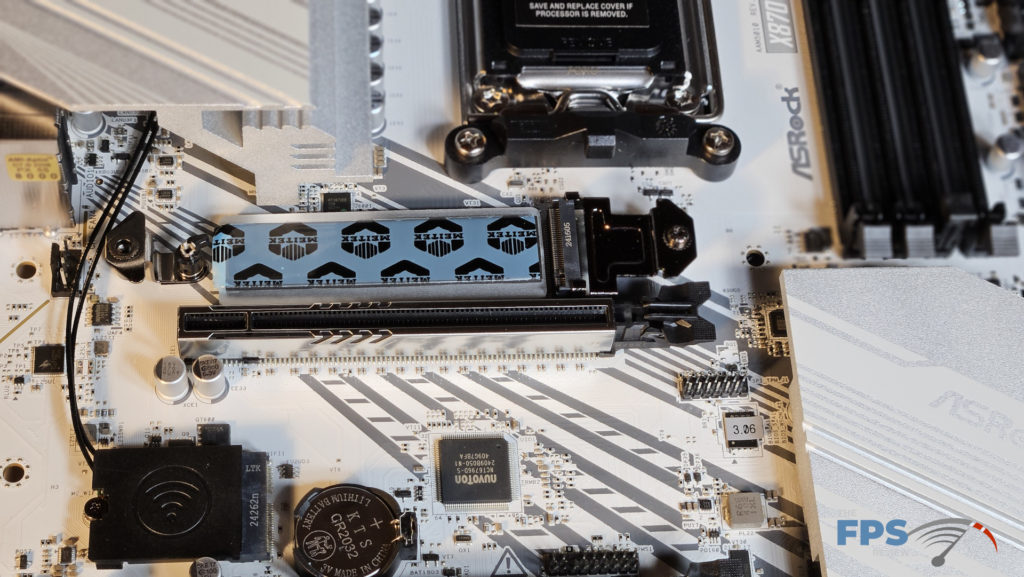
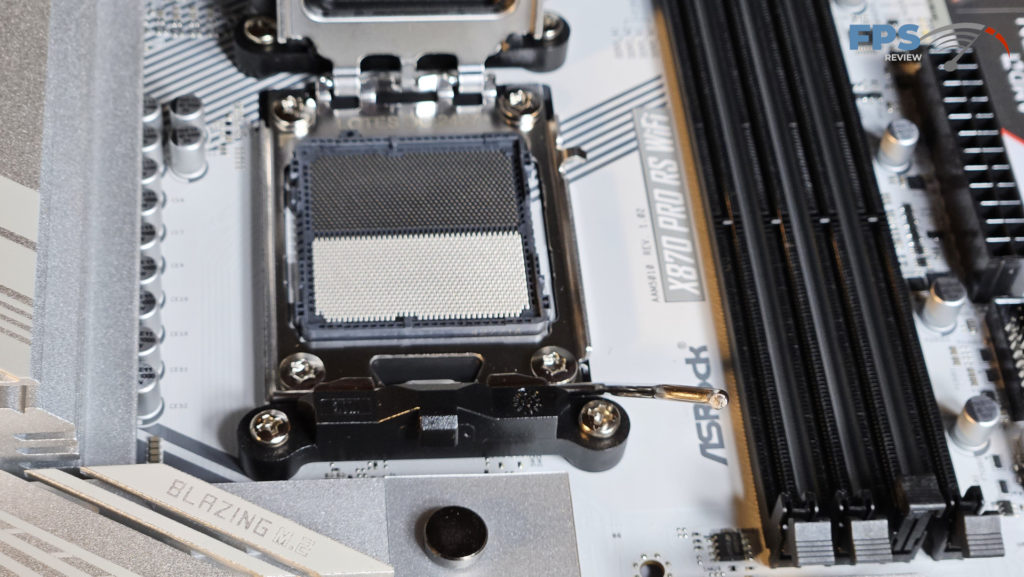
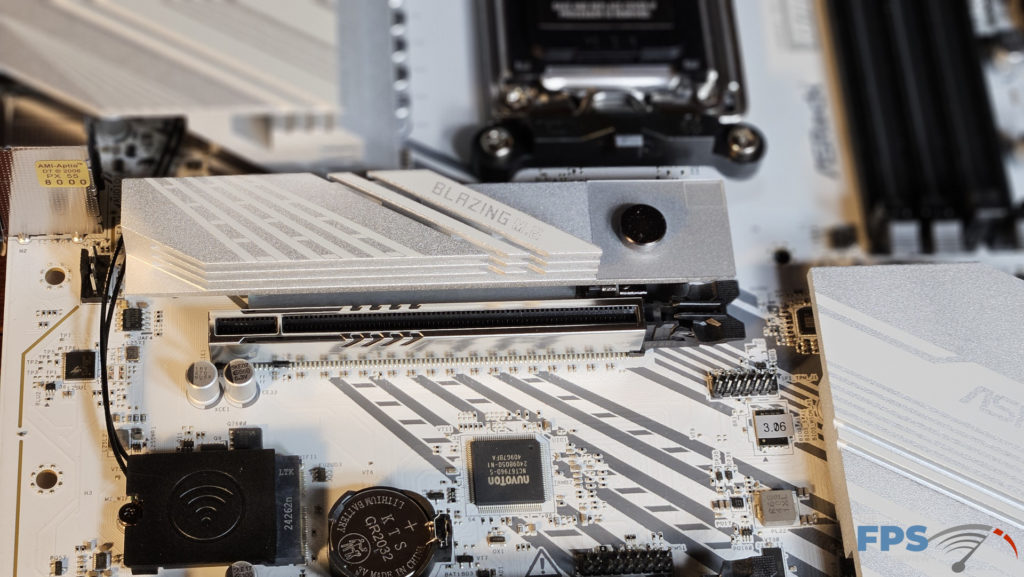
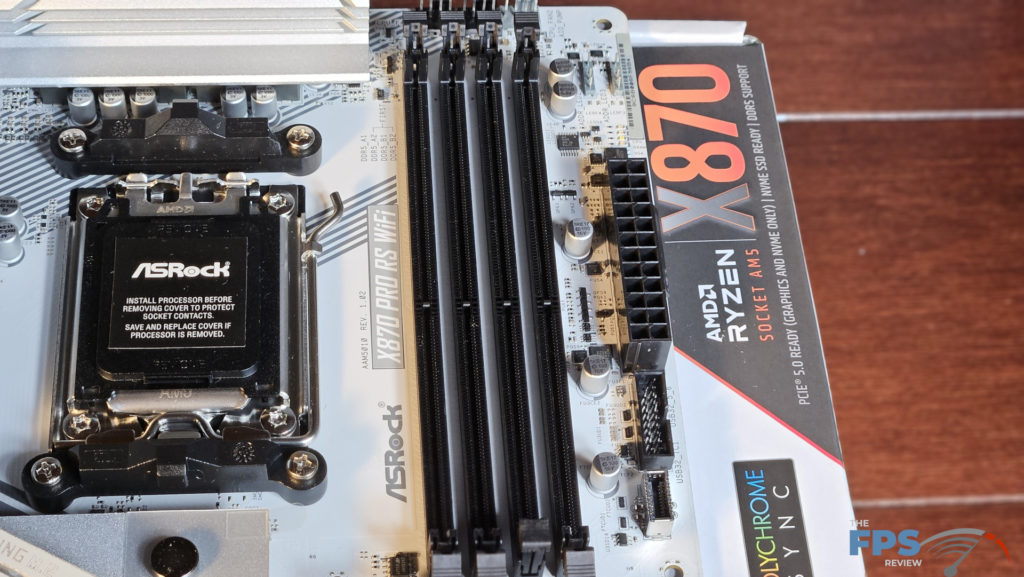
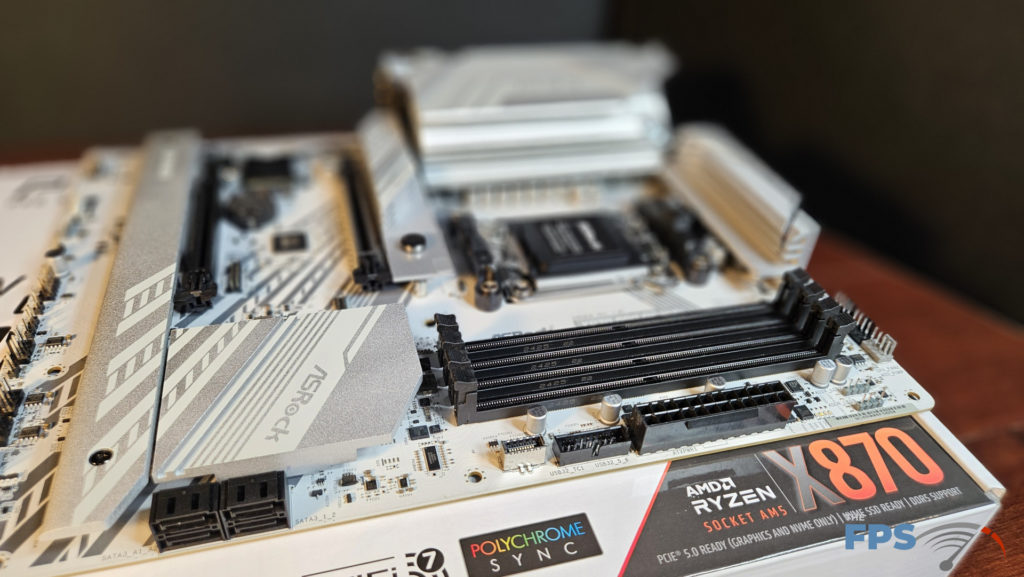

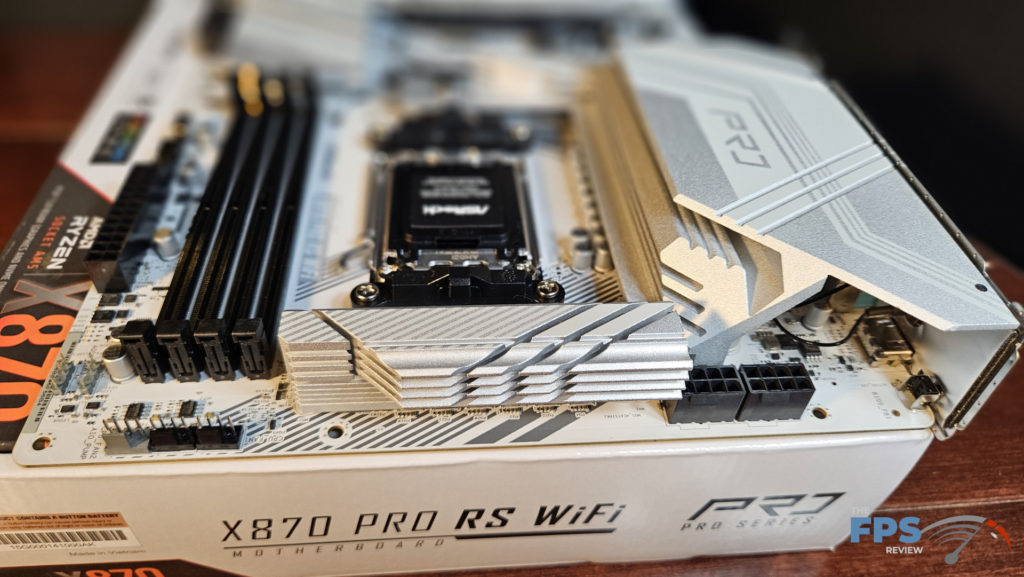
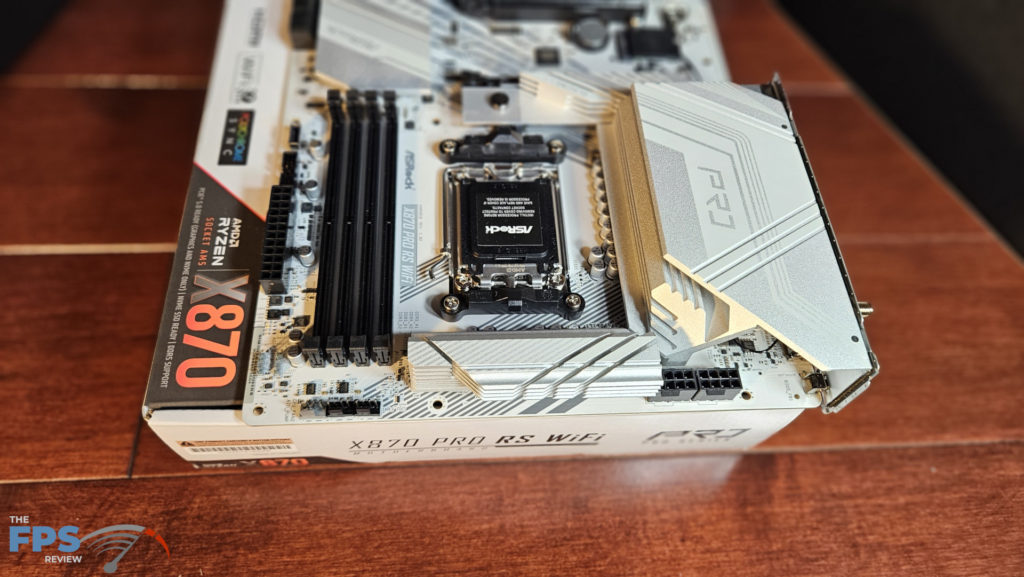
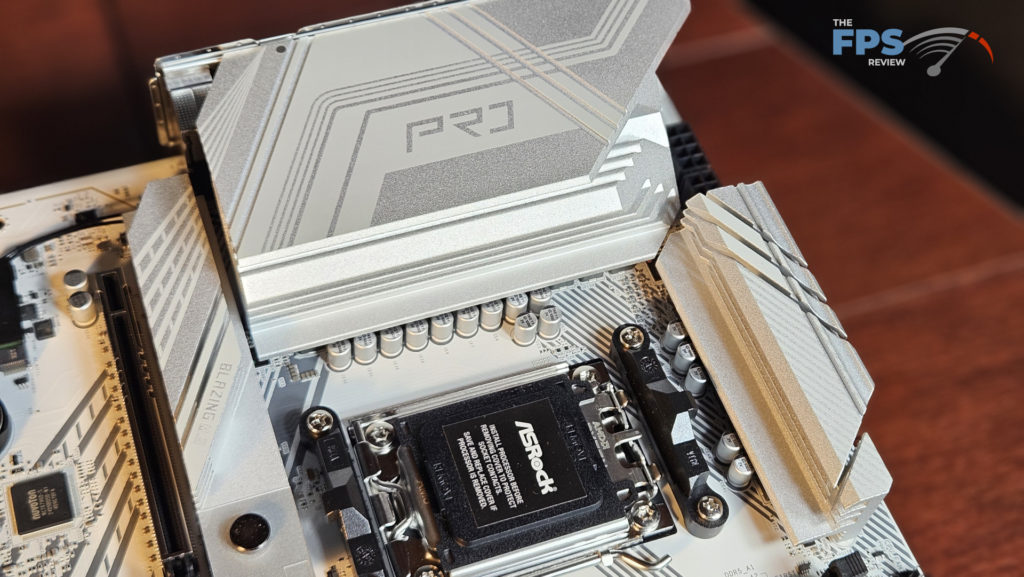
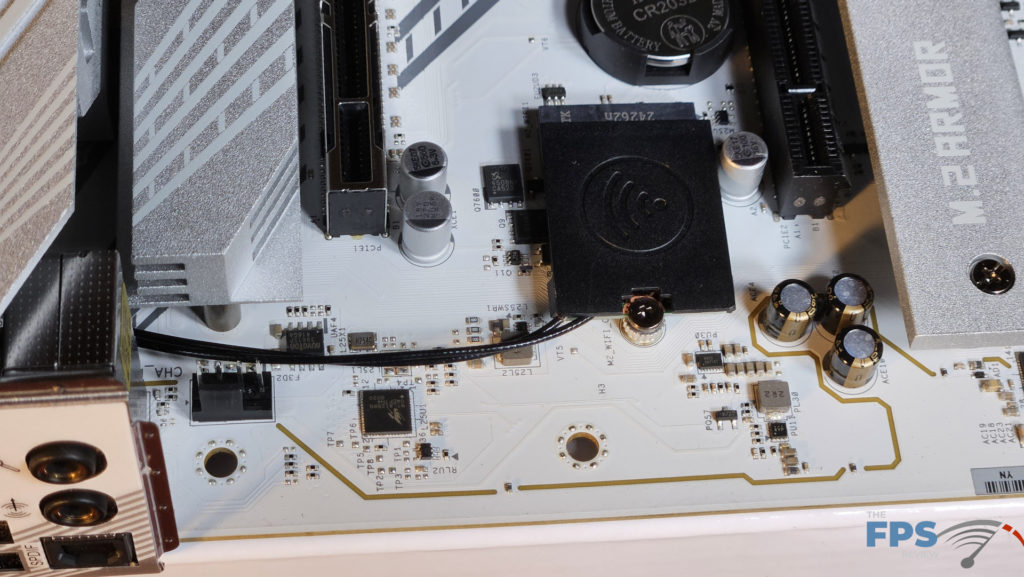
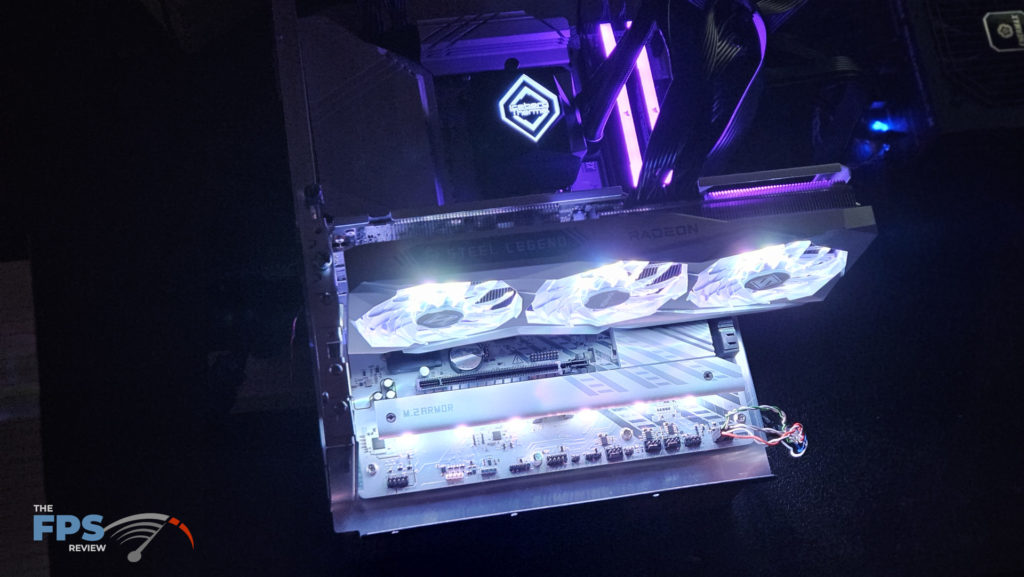
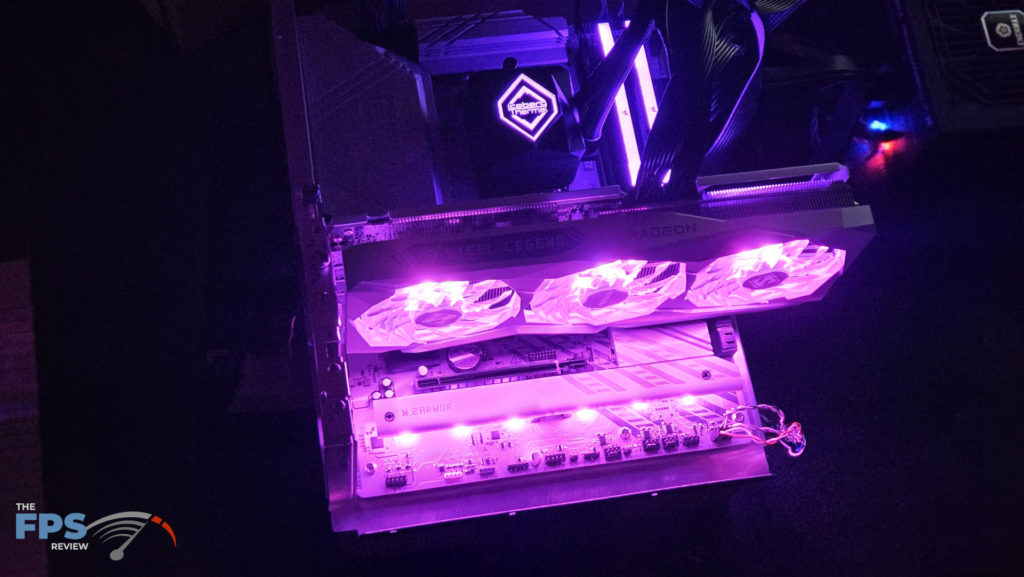
UEFI
The ASRock Phantom Gaming X870 RIPTIDE WiFi uses a standard UEFI BIOS, an American Megatrend AMI 256MB UEFI. UEFI is easily entered from the logo screen and presents you with the main screen. The BIOS enters the main screen for the Advanced Mode. There is an “Easy Mode” and an “Advanced Mode” as you will see in the screenshots.
Easy mode is a single screen and can be used to select profiles for your RAM, boot order, and some limited monitoring, if you need it. Advanced mode has all the remainder of typical BIOS selections such as manual overclocking, Performance Boost Overdrive, onboard devices, fan adjustments and controls, monitoring, and BIOS Flashing.
Since this is an X870 model the selections are somewhat slimmer than you would see on the top-shelf X870E models. However, one can still manually adjust plenty of options for the CPU and RAM. It was interesting to see that the ASRock X870 Pro RS WiFi has the exact same UEFI/BIOS as the other two ASRock offerings in the X870 stack, despite being more of a general use-aimed board.
We were issued the release BIOS with our motherboard, 3.08.AS01 with AGESA 5PI 1.2.0.1 dated 9/11/2024. There are no updates yet so we cannot comment on the ASRock “Instant Flash” procedure. However, it appears to be identical to other manufacturers flashing from a USB Drive. There is also the BIOS Flashback button which allows BIOS flashing with only the motherboard, a USB drive, and the PSU.
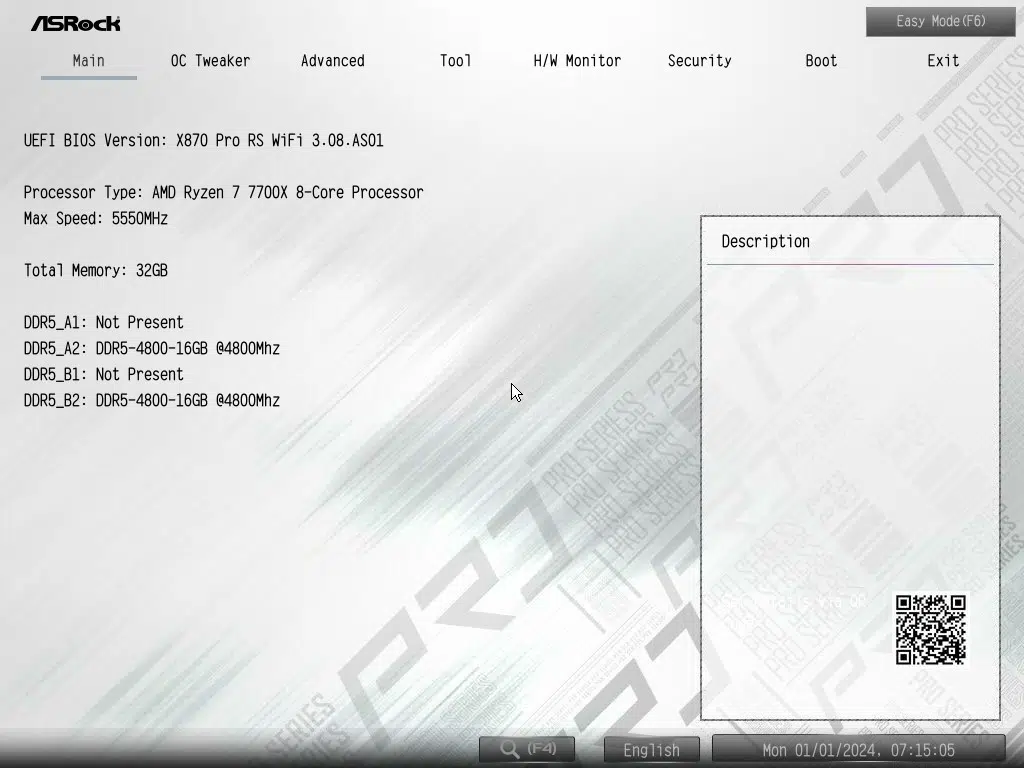
We found the UEFI to be very straightforward and easy to navigate. The color background is similar to the ASRock X87 Steel Legend WiFi, a bit taxing on the eyes after a while. While one can change the color scheme, to be honest none of the choices was exceptionally better. The UEFI was very familiar as it was exactly the same as the Steel Legend and Phantom Gaming RIPTIDE.. There are ample submenus to tweak your settings if you so desire. The ASRock Fan-tastic, Instant Flash, and Auto Driver Installer are nice tools to use from the BIOS.
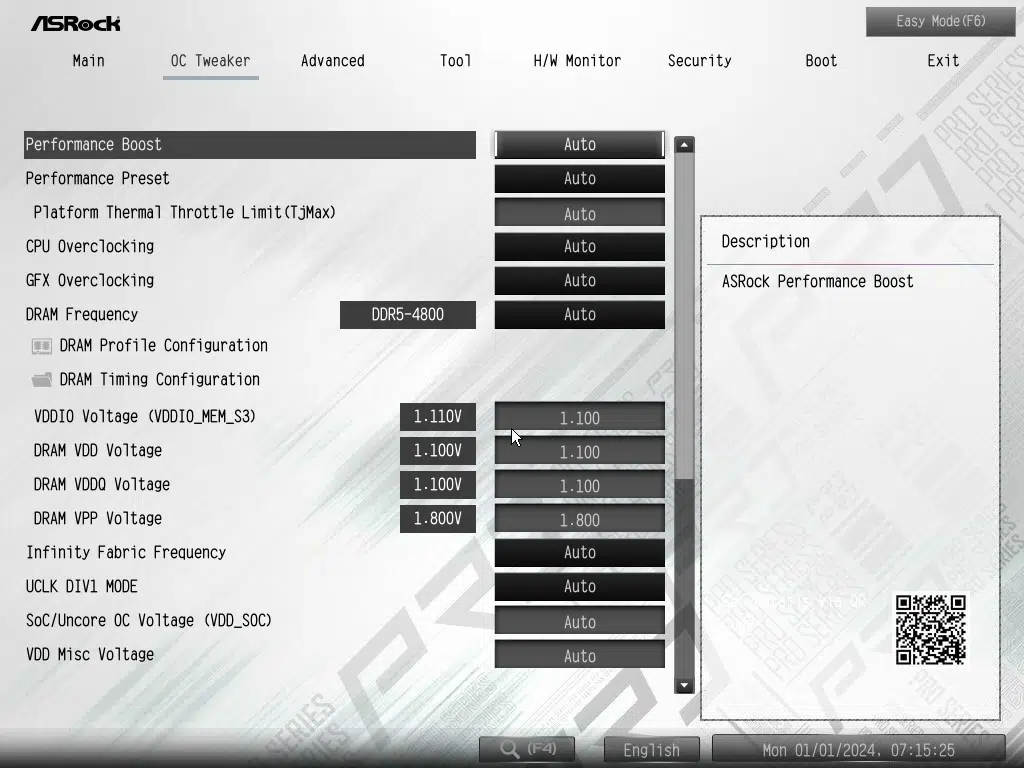
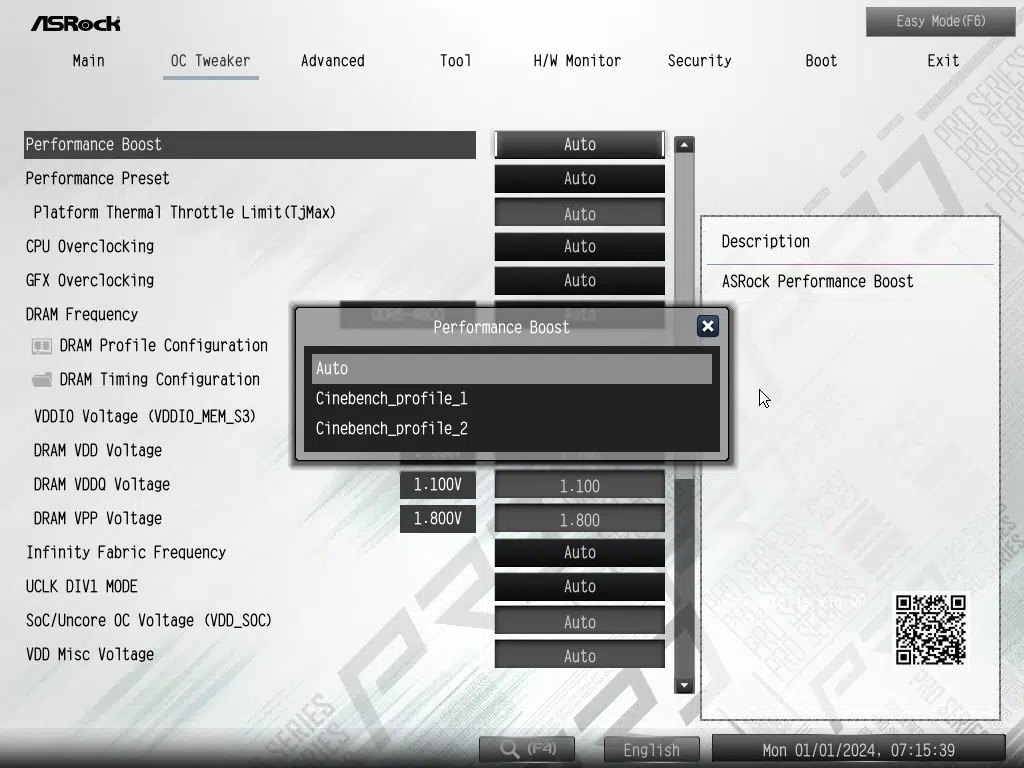
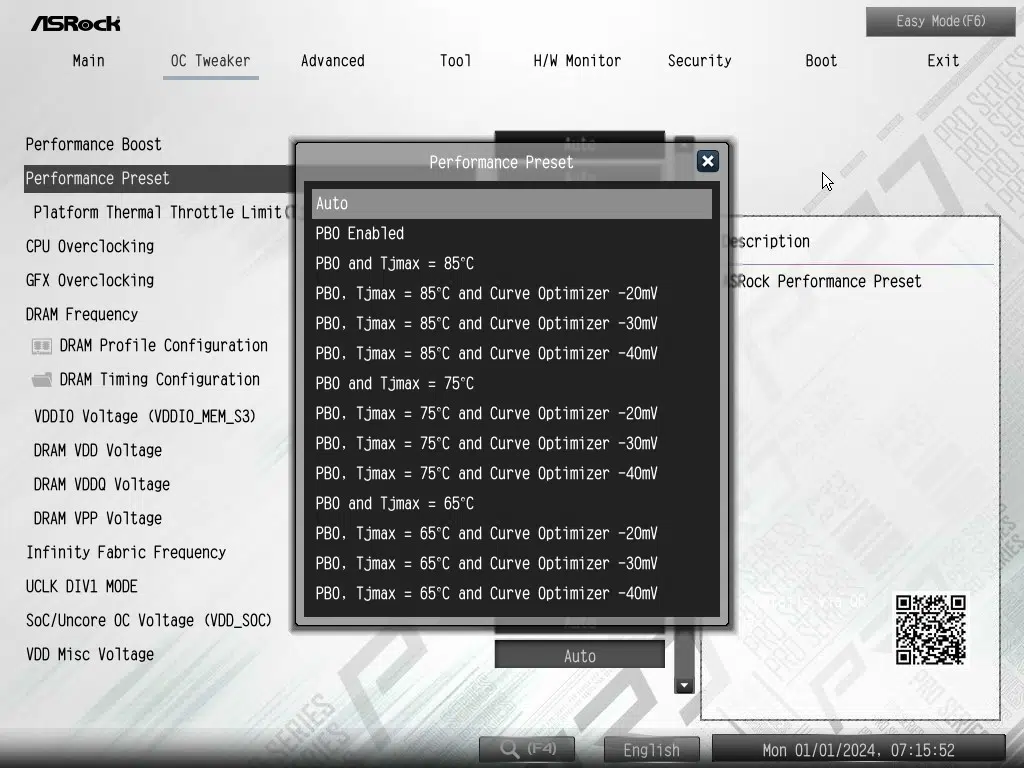

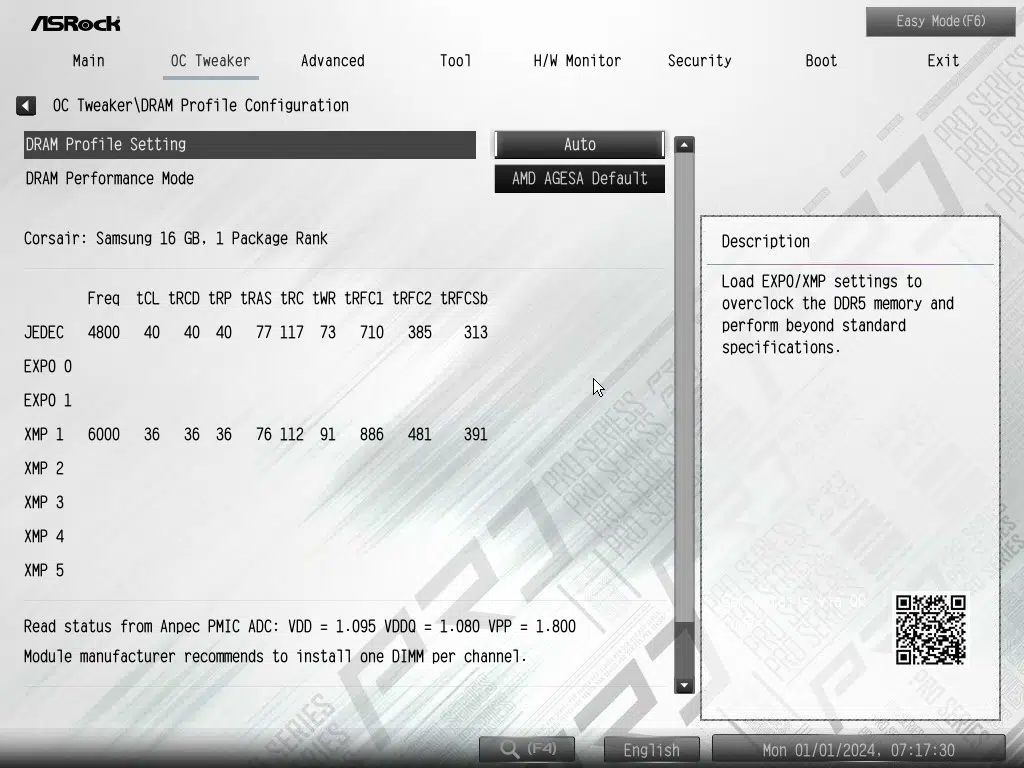
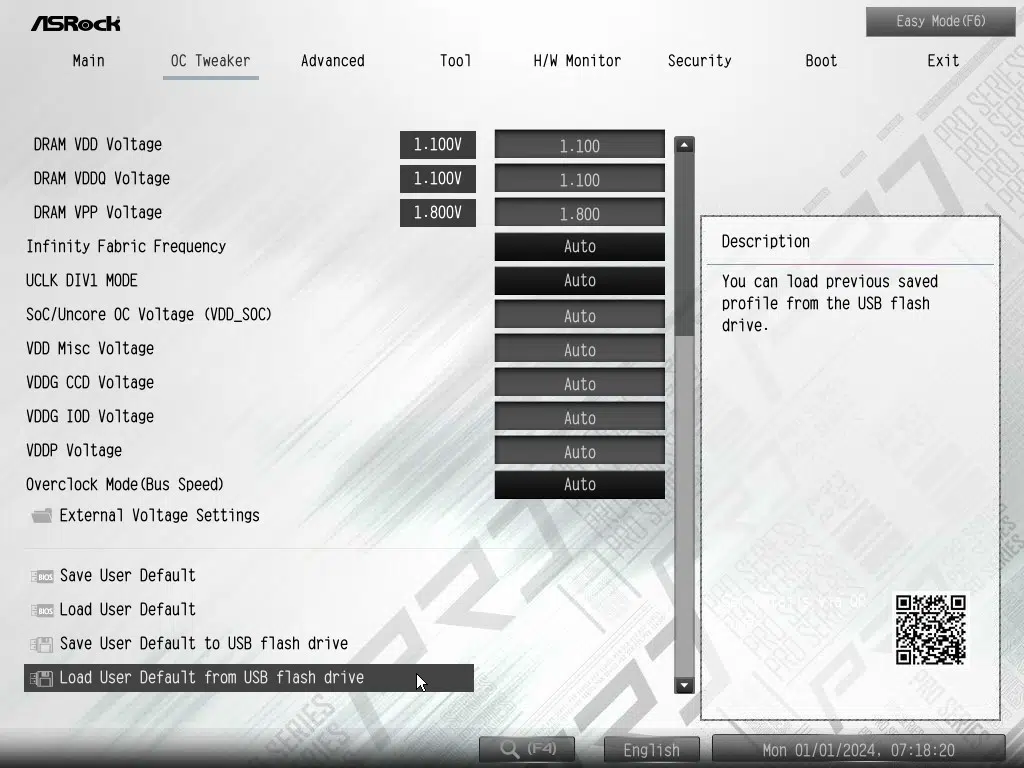
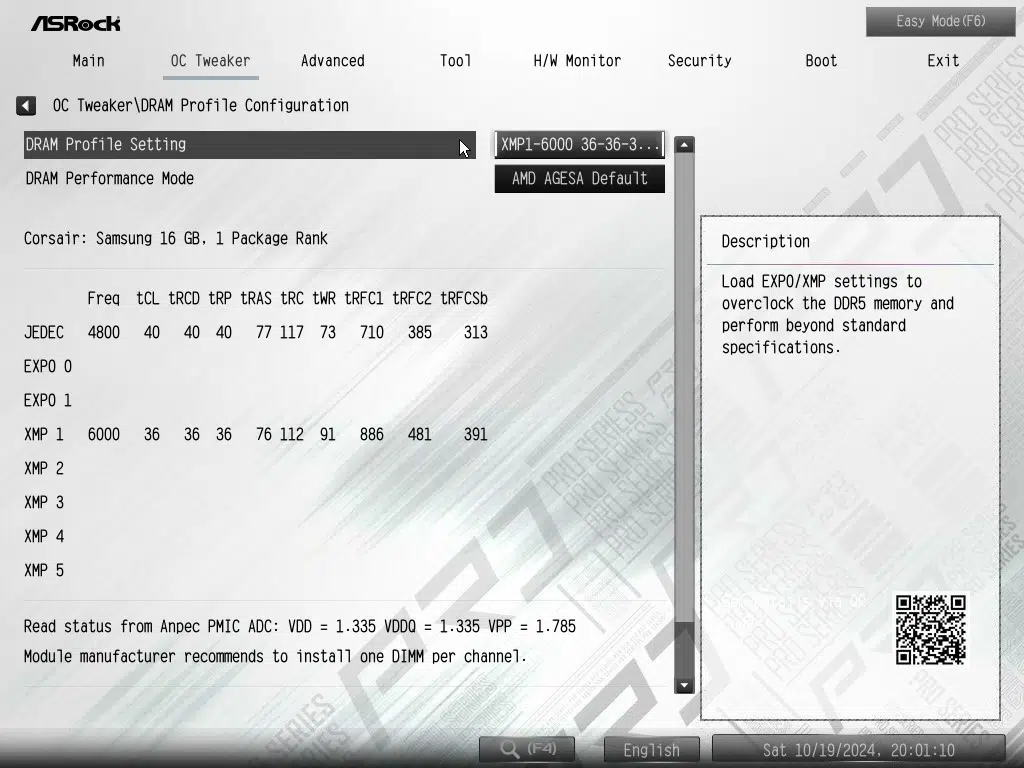
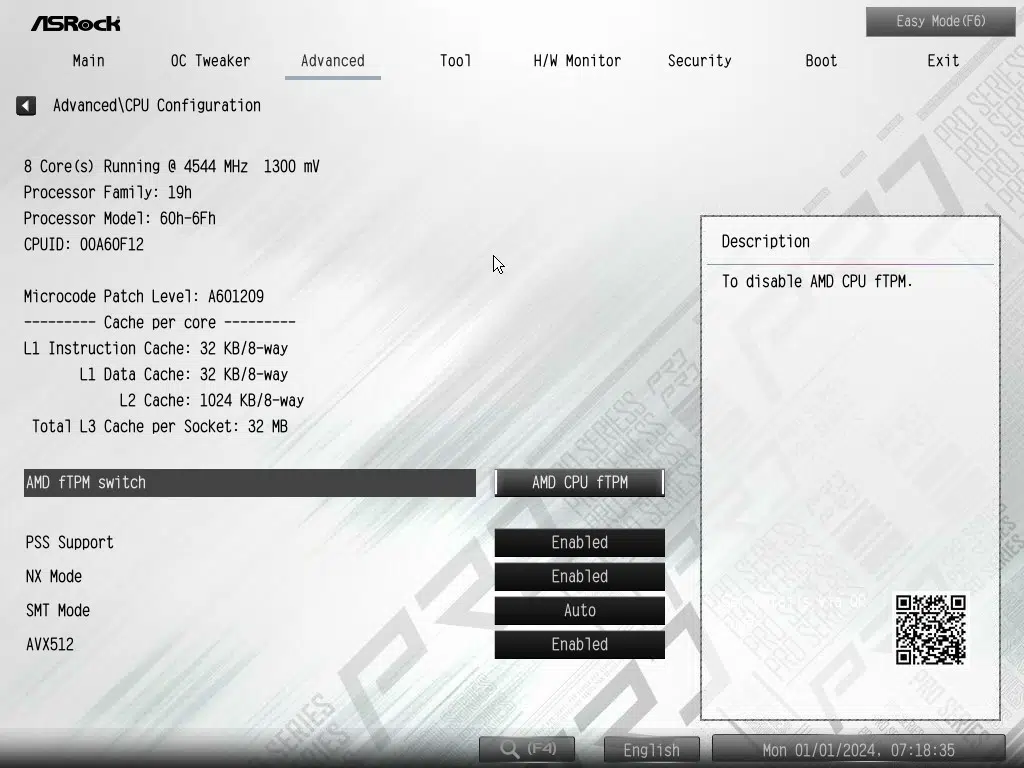
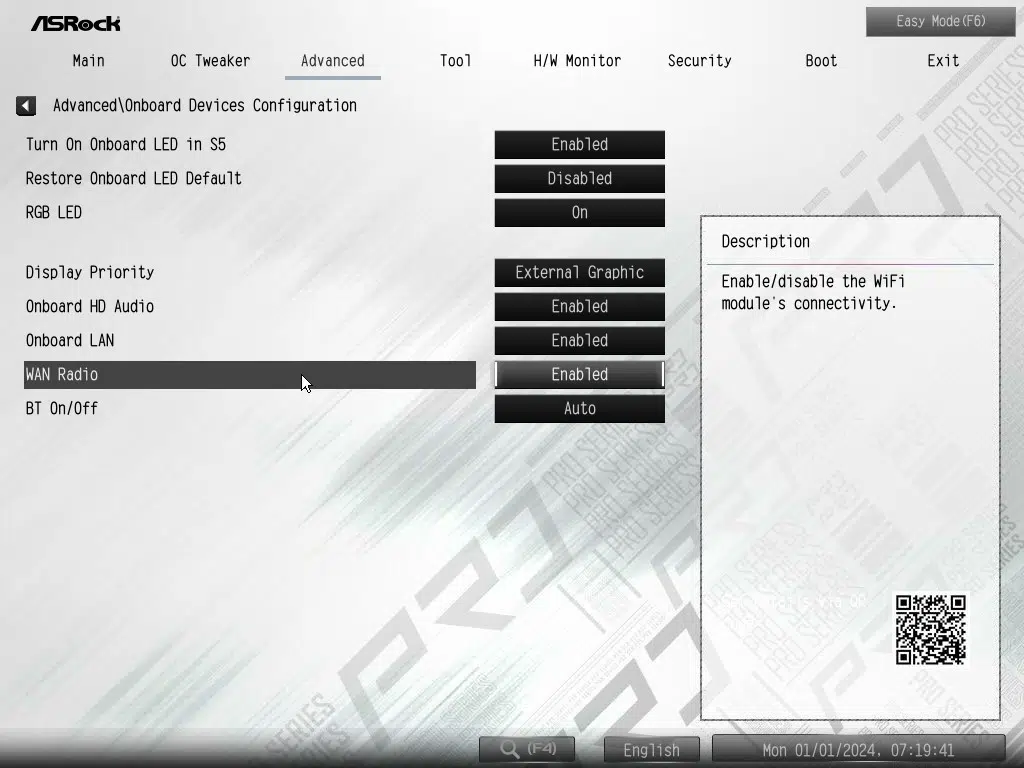
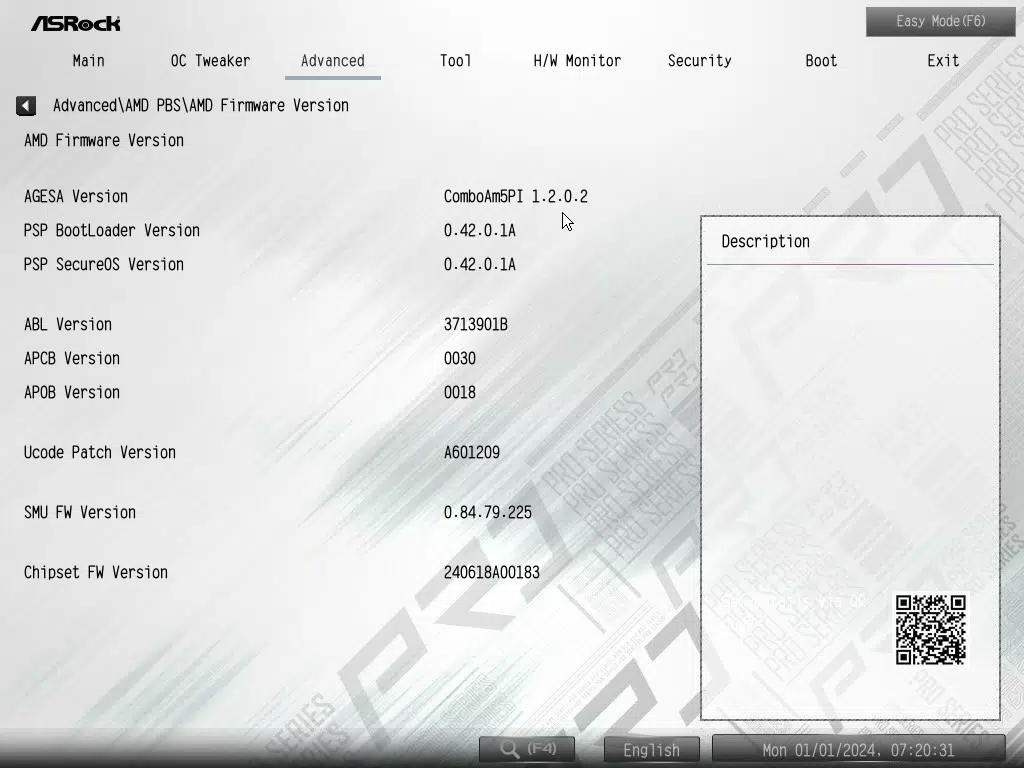
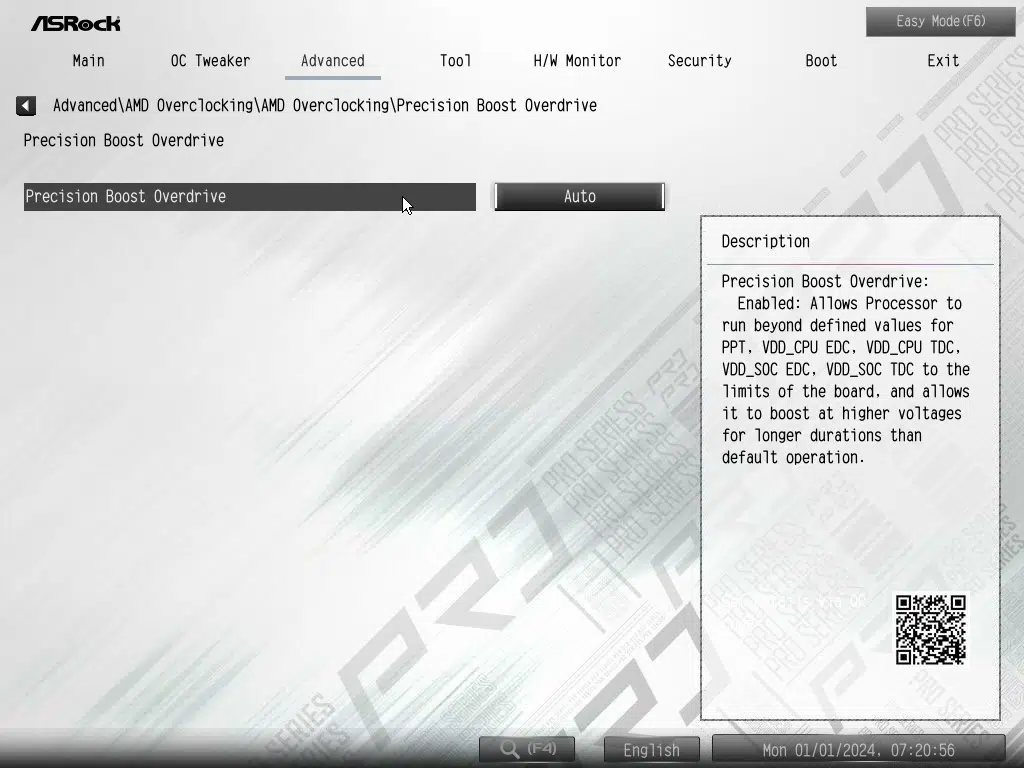
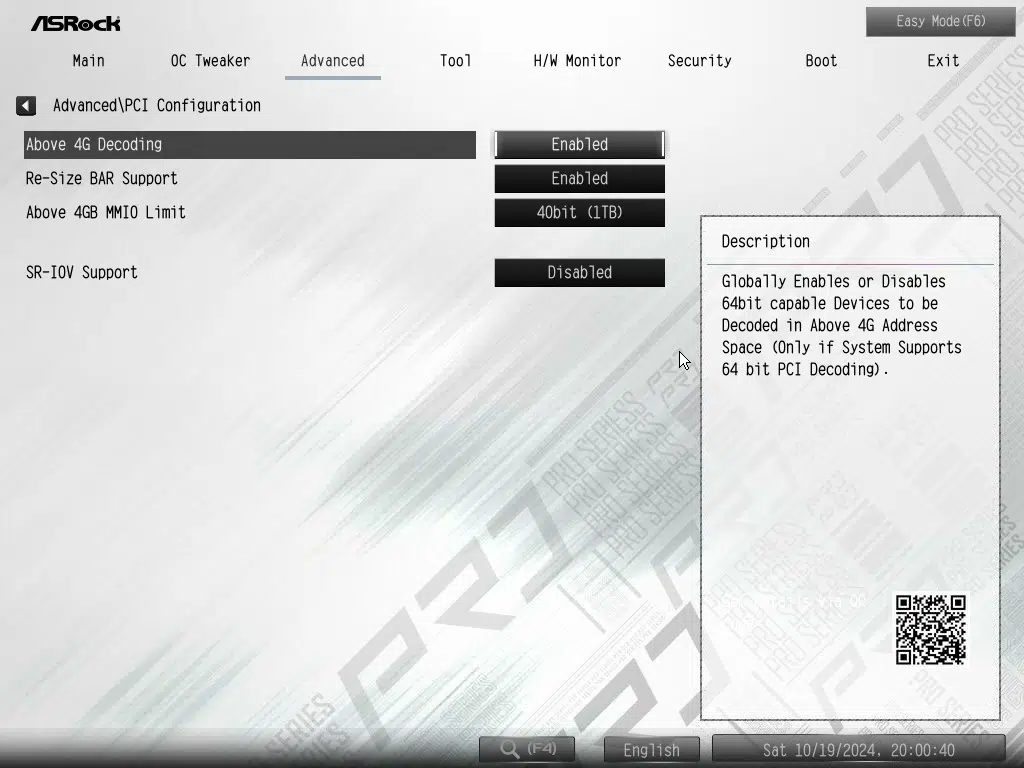
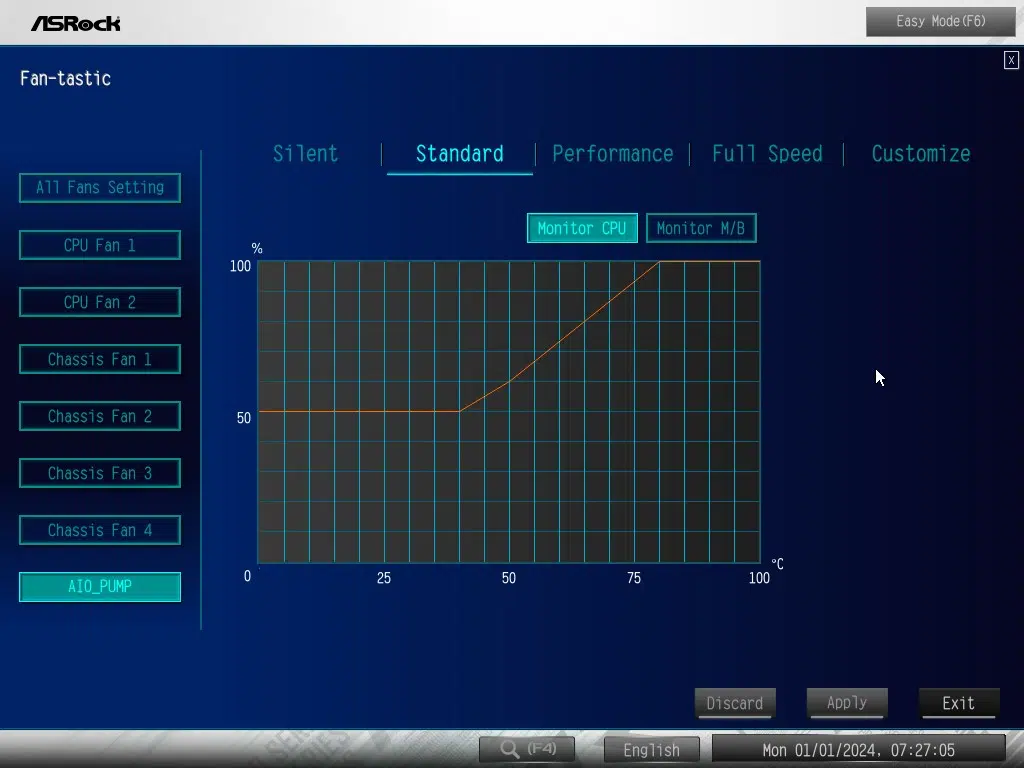
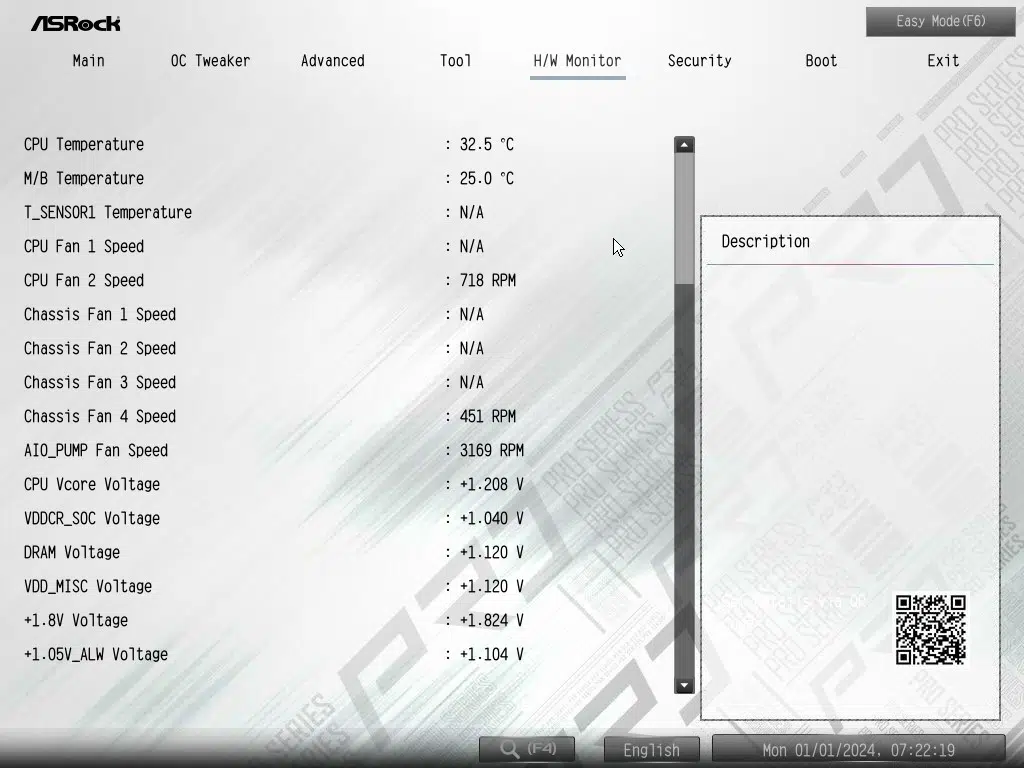
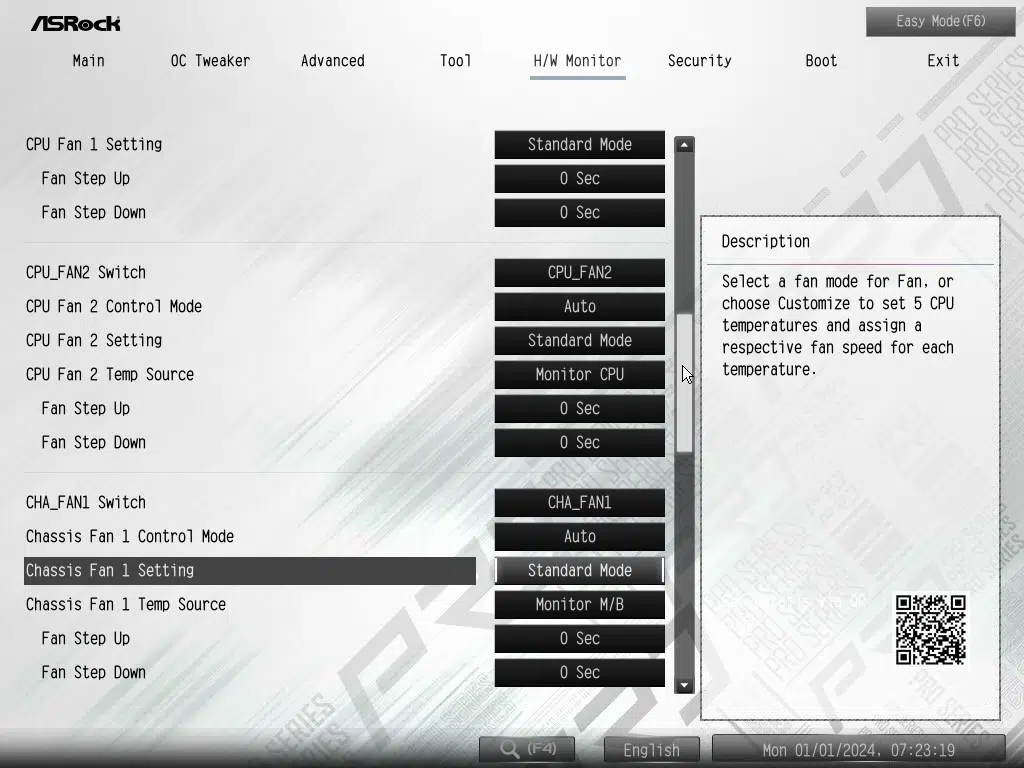
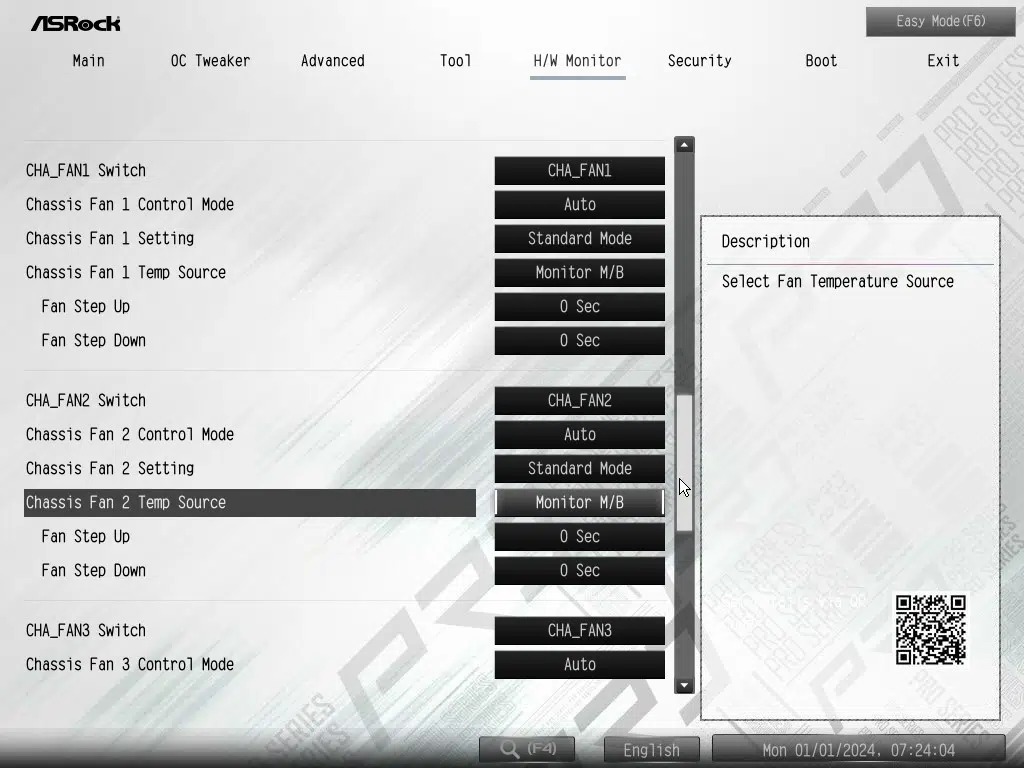
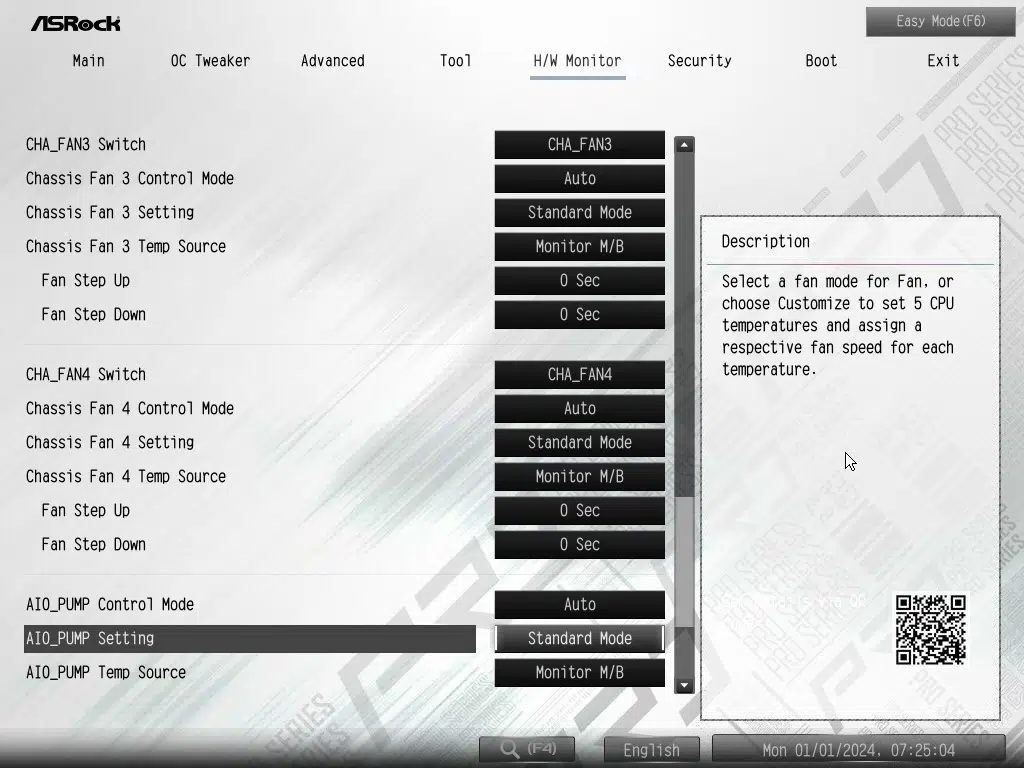
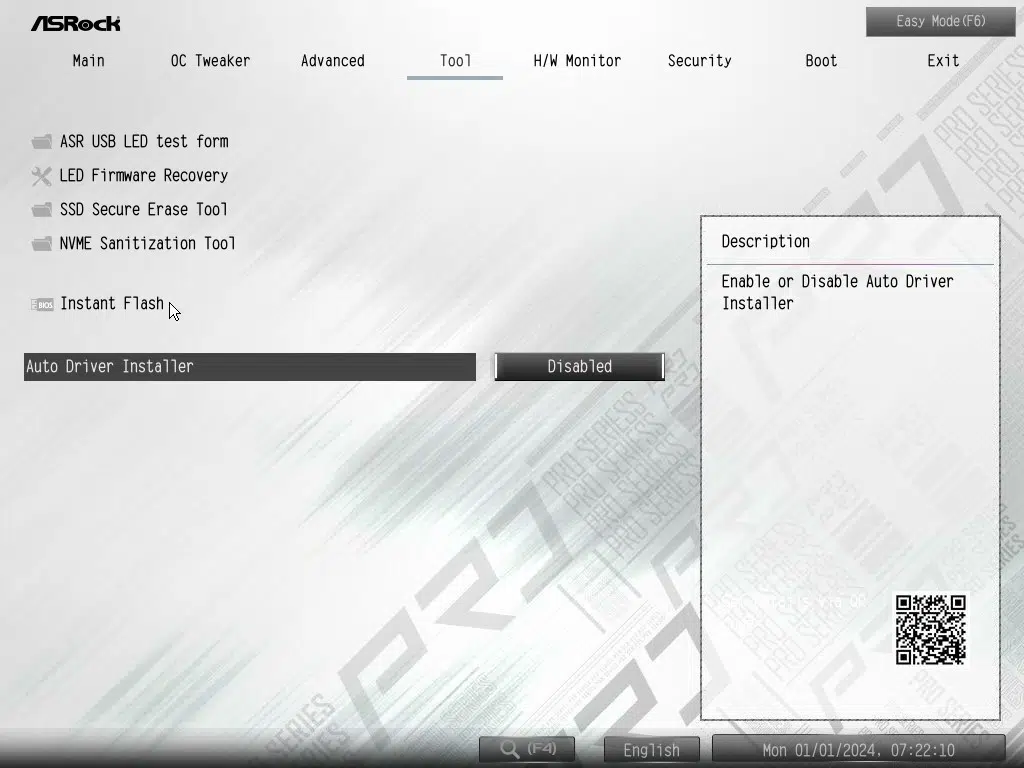
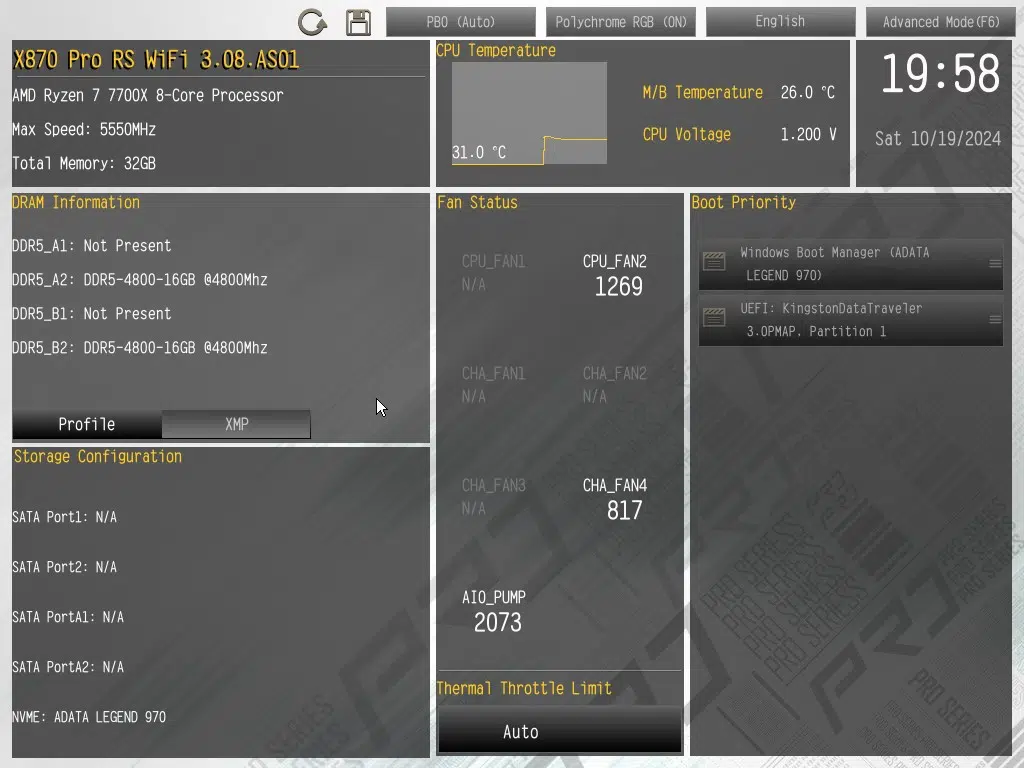
Subsystem and CPU Testing
Testing the ASRock X870 Pro RS WiFi was accomplished using the benchmarks below. The following components were used: AMD Ryzen 7 7700X, Corsair Vengence DDR5 32GB at 6000MT/s (CMH32G5M2D6000C36), ADATA Legend 970 Gen5 NVME SSD and ASRock Radeon™ RX 7600 XT Steel Legend 16GB OC graphics card. Comparison results are discussed from the recent review of the ASRock X870 Steel Legend WiFi and ASRock X870 Phantom Gaming RIPTIDE WiFi motherboards.
M.2 Performance
In this section, we tested our Gen5 drive in all three M.2 slots using CrystalDiskMark. Recall this motherboard has one Gen5, one Gen4, and one Gen3 slot. The results are nearly the same across the board.
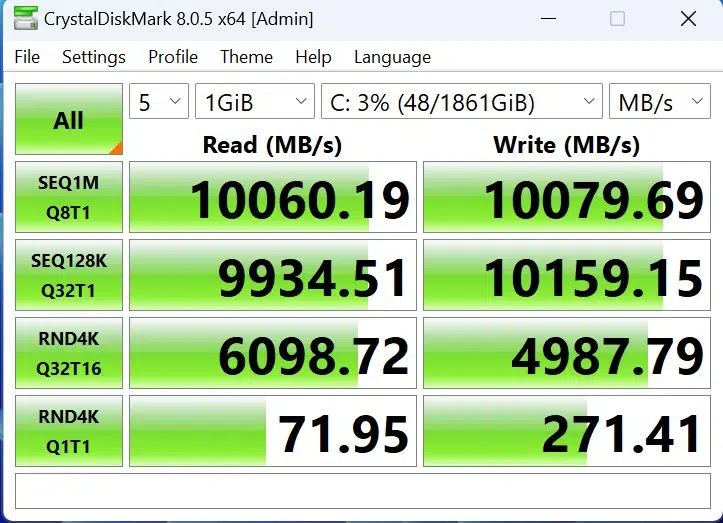
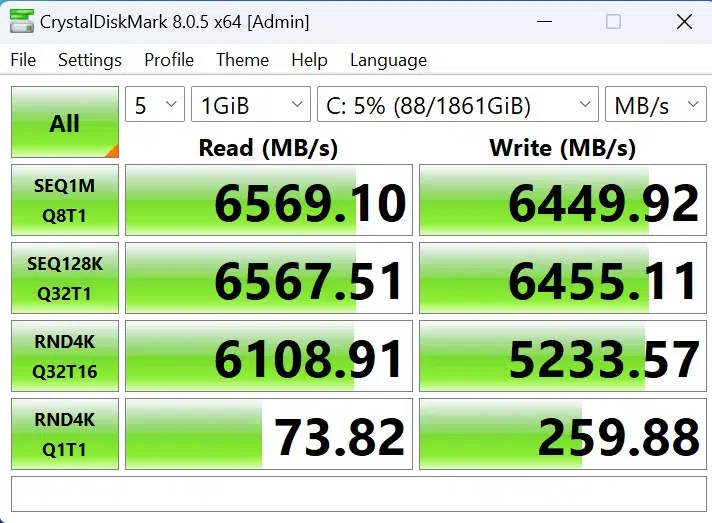
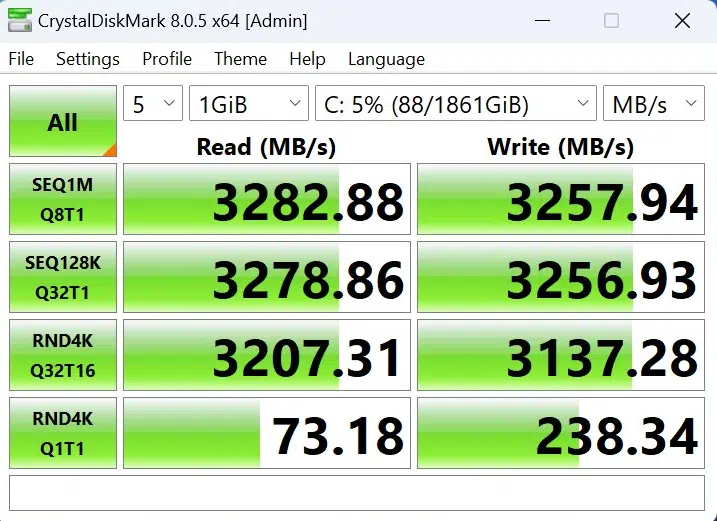
Memory Bandwidth
We use the AIDA64 Cache and Memory benchmark. Our Corsair DDR5 modules are set at XMP profile. Once again, the results are nearly identical.
PCMark 10
Here we use the standard full-system PCMark 10 benchmark to test everyday office and productivity. Again the three motherboards give a near identical score.
Cinebench R23
The standard Cinebench R23 benchmark was run for 10 minutes in both multi-core and single-core CPU testing. We resulted in 19,816 and 1996 respectively. The results once again were as expected, nearly identical.
Blender Benchmark
In Blender, our results are Monster 122.8, junkshop 88.6, and Classroom 63.1. These results are spot on the comparisons.
3DMark
n this benchmark, we run both the CPU Profile and TimeSpy. Max threads resulted in 9074 and the TimeSpy CPU score was 13279. Again, nearly identical to the comparison boards.
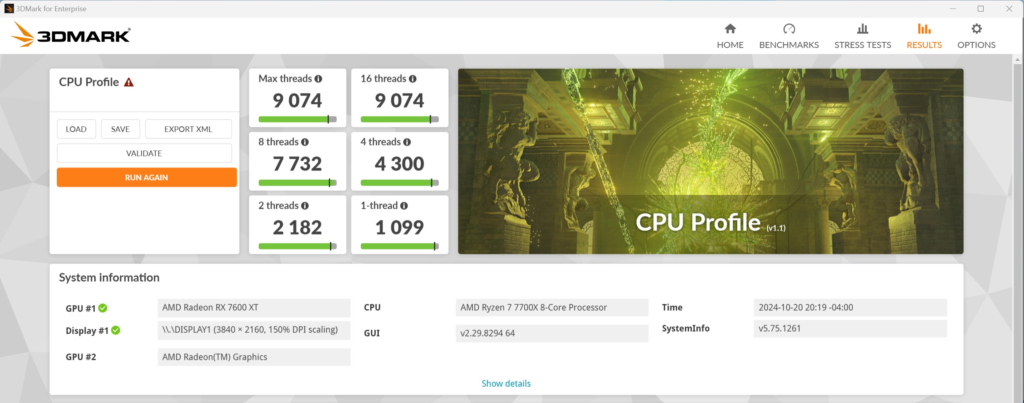

V-RAY Benchmark
We run the CPU-only benchmark in V-Ray. The result compares well across all reviews.
VRM Temperatures
Here we run the Cinebench R23 benchmark for 20 minutes and measure the VRM temperatures using HWInfo64. The benchmark ran without an issue. There was no thermal throttling. The CPU temperature at 100% load was 92C the VRM temperatures were between 34.0 and 35.5C. This CPU temperature was between 4 and 9C higher than on the other two motherboards. This was found to be simply a poor application of thermal paste between the AIO heatsink and the CPU heat spreader. Nonetheless, the board performed flawlessly throughout.
Conclusion
In this review, our third X870 chipset motherboard from ASRock, the ASRock X870 Pro RS WiFi was evaluated. This full ATX motherboard supports the AMD socket AM5 Ryzen 7000 and 9000 CPUs and DDR5 up to 8000MT/s (overclocked). New features for this chipset are dedicated Gen5 PCIe and SSD support, USB4, and WiFi7.
This unique white, silver, and black motherboard is well-built and performs very well. Given the price point, one would expect some differences in performance or features, but in our testing and evaluation, this motherboard performed nearly the same and sometimes even better than its more expensive siblings.
Honestly, all you lack on this motherboard, comparatively, is one USB Gen3.1 header and one Gen4 M.2 slot. (but you still get one Gen5, one Gen4 and one Gen3 slot) This board gives you all you need in an X870 chipset and comes in at $209, putting $70 back in your pocket. That’s a pretty good deal right there.
Installation and Use
All in all, the ASRock X870 Pro RS WiFi was a pleasure to work with. All our components were installed without any issues. The CPU socket space has enough room for just about any heatsink. The RAM slots are the old-school double latched type, but are no problem nonetheless. The only issue you may find would be a big, wide tower air cooler and tall heatsinks on your RAM. The primary M.2 slot has an EZ Release latch while the M.2_2 and _3 are covered by a heatsink that is held with Phillips screws. All the slots have a tool-less hold down latch. The primary PCIe slot is steel-reinforced but has no EZ release.
Our only issue with installation was simply due to the construction of our Gen5 SSD. The ADATA 970 Legend SSD has an active heatsink and is quite thick. Due to this, we could not use the primary heatsink top. In fact, we could not use the hold-down latch either. So we had to find an M.2 screw in our spare parts box. The same would hold true for M.2 slots #2 and #3. If you have a tall passive or active heatsink you won’t be able to use the top heatsink. The only other issue is the primary M.2 slot is within one millimeter of the primary PCIe card release latch when the heatsink top IS used. This makes it REALLY hard to remove your graphics card. We had to take the heatsink top off first.
Final Points
This review gives us the Hat-Trick of ASRock X870 motherboards. We have had hands-on with the ASRock X870 Steel Legend WiFi, the ASRock Phantom Gaming X870 RIPTIDE WiFi, and of course the ASRock X870 Pro RS WiFi. We honestly have had a difficult time separating these boards on the basis of performance. Each motherboard had no issues from start to finish. Everything just works the way you’d expect. The designs except the color schemes are nearly identical. The UEFI/BIOS are the same. The build quality is the same. If you are looking for a solid motherboard for socket AM5 and your budget is around $200, there is no doubt this is your board.
If you want to save $10 the ASRock X870 Pro RS is also an option, if you do not need WiFi. At $199 (for the Pro RS) or $209 (for the Pro RS WiFi) we feel this is a great entry point for anyone looking to upgrade finally to the AM5 platform. The X870 chipset is configured very well for all the major features you need, Ryzen 7000/9000 CPU support, high-speed memory, Gen5 SSD, high-speed USB, and plenty of configuration options. ASRock has made the entry-level AM5 platform an attractive value with what is offered at this price point.




